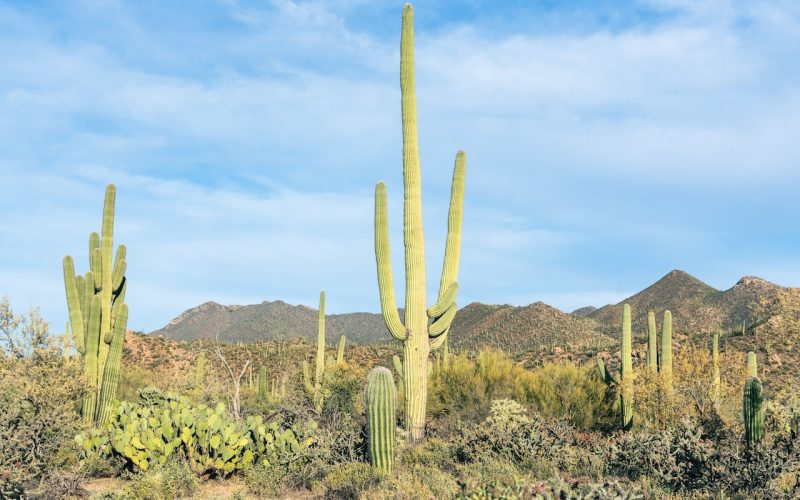Now is the best time to visit Tucson, Arizona, and it’s not just because of its mild temperatures in the fall and winter. This year, Arizona’s second-largest city offers new travel experiences for the curious and adventurous.
Resting in the heart of the Sonoran Desert region of the American Southwest, Tucson offers a distinct flavor all its own by blending its centuries-old history of Mexican and Native American cultures in a variety of ways for travelers to experience. From a burgeoning culinary and arts scene to its unique cacti-filled landscapes, Tucson is a destination to put on your radar.
Lucky for us Denverites, a two-hour direct flight from Denver to Tucson is all you need for a warm-weather getaway this fall/winter.
A culinary hotspot rooted in its past and the present
In Tucson, where they dine and delight you without chain restaurants, just local flavors and favorites, the culinary scene dates back centuries to ancient Mexican culture. With its location near the U.S.-Mexico border, Tucson is perfectly placed in the center of Mexican and Native American traditions that heavily influence the area’s food—earning a reputation as “America’s Best Mexican Food.”
A 2000 James Beard award for top chef in the Southwest helped to put Tucson on the culinary map. Chef Janos Wilder, who attended the University of Colorado and enjoyed a short stint as the chef at the Gold Hill Inn in Boulder, was the first chef in Tucson to win a James Beard award for his work at Downtown Kitchen and Cocktails.
This year, two other Tucson chefs—Chef Wendy Garcia at Tumerico and La Chaiteria, and Flavia Briones at Barista Del Barrio—added to the city’s culinary reputation as semifinalists for the James Beard Award’s Best Chef in the Southwest category.
Mission Garden
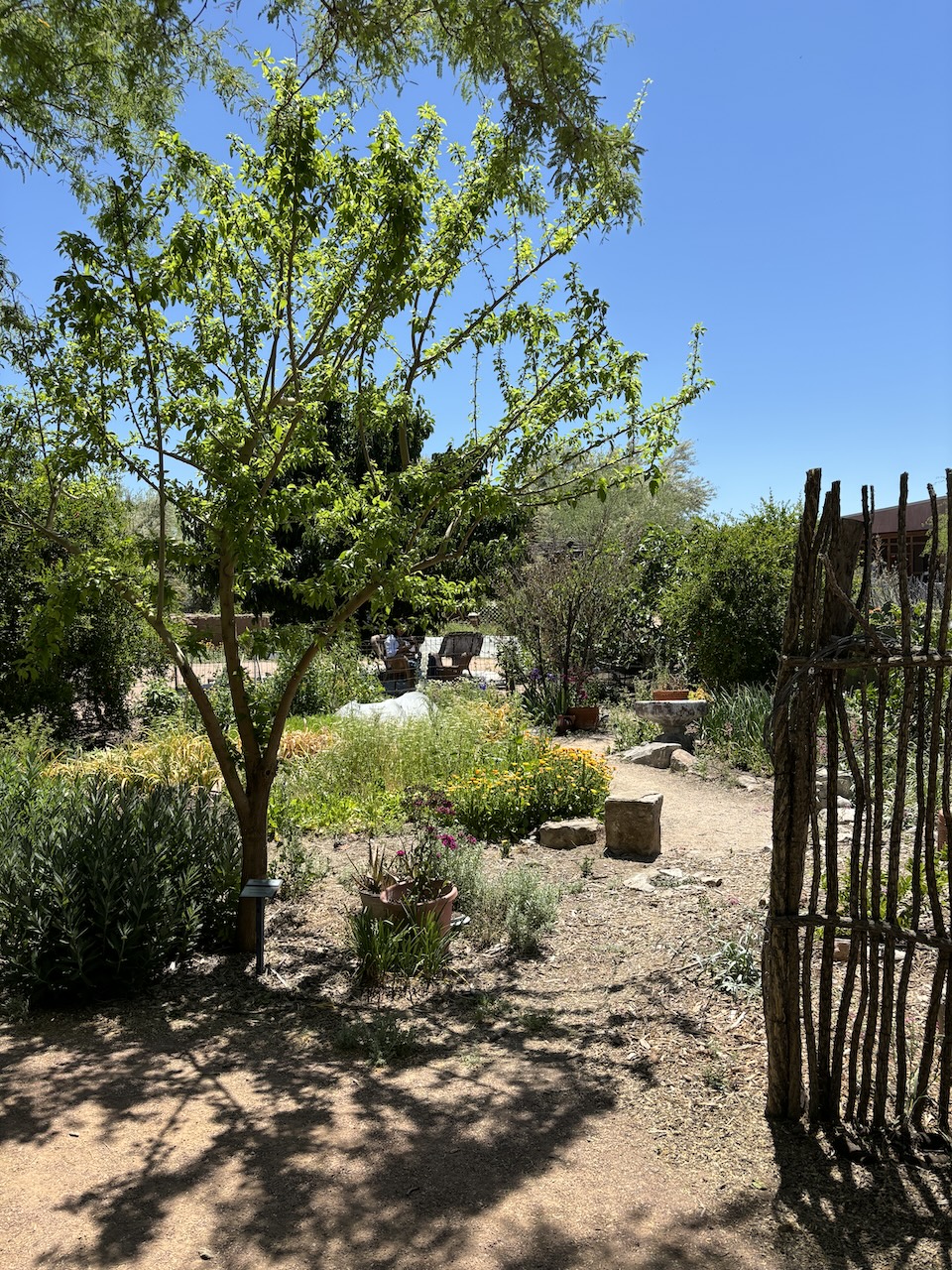
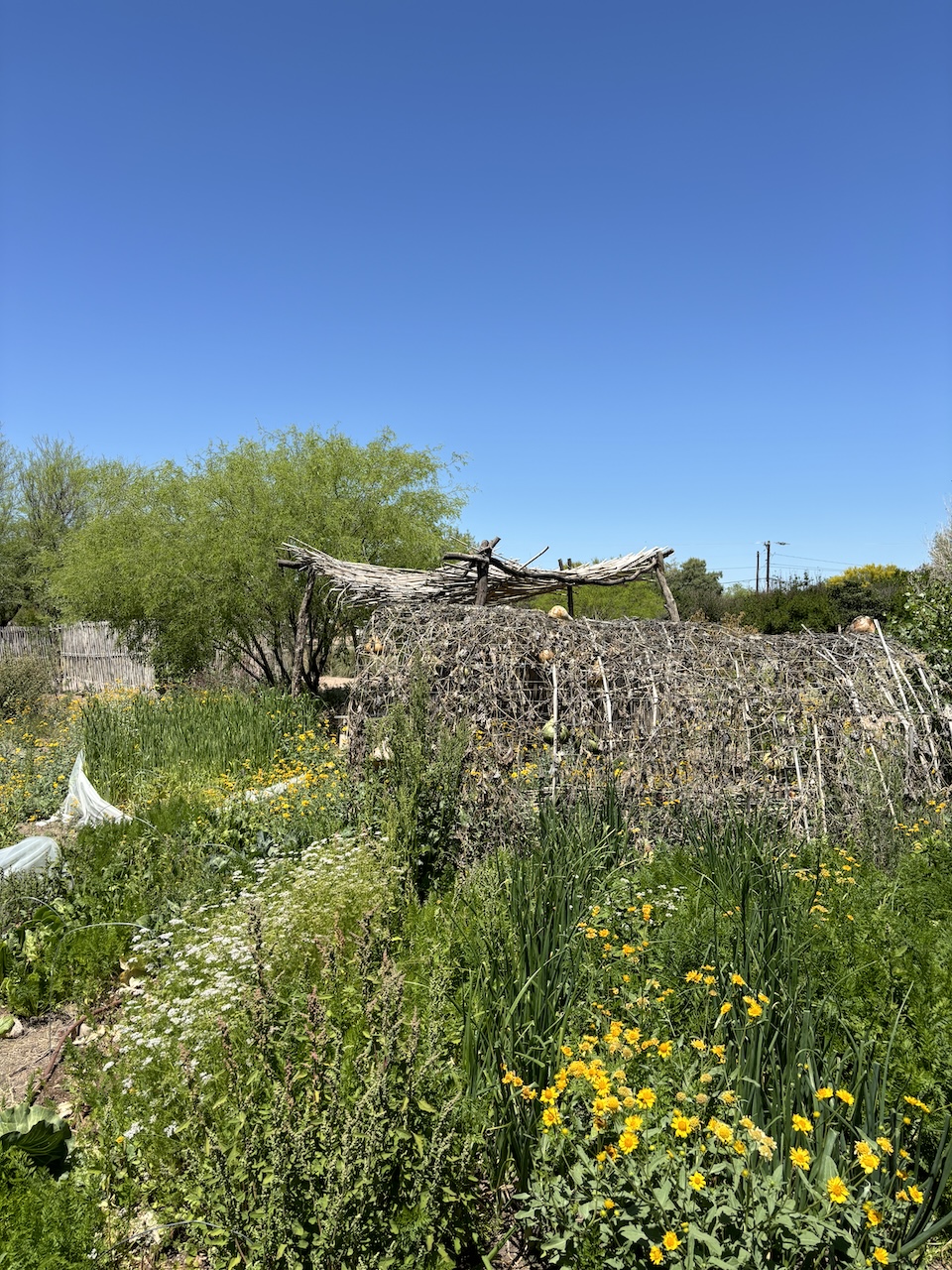
Before you begin your gastronomy journey, visit the Mission Garden to see where Tucson’s culinary scene first began. As a sort of living museum to local foods, the site’s millennia-old roots of fruit trees, heirloom crops and edible native plants are what helped Tucson become the United States’ first UNESCO World City of Gastronomy.
Located at the foot of Sentinel Peak, Mission Garden is the site of the Native American village of S-cuk Son (pronounced “Chuk- Shon”), a place sacred to the Tohono O’odham. These lands have been inhabited for the past 5,000 years and are the site of the first farms in the U.S.
Learn how the influence of multiple cultures including the Hohokam, Tohono O’odham, Spanish, Mexican and Chinese, helped to form Tucson’s evolving culinary scene as we know it today. Taste your way through the garden with mulberries, oranges, lemons and figs you can pluck right from the tree. Or try the Chinese snow peas that taste so sweet that you’ll wonder why you aren’t growing some in your garden.
I happened to be there during the Agave Heritage Festival that takes place every year in April and caught the end of a special Agave roasting demonstration showing how the plant can be cultivated for many different uses. And because Agave produces food and fiber with virtually no irrigation, it is an important crop to local farmers and growers in drought-driven Arizona.
Don’t leave Tucson without trying these foods and restaurants:
When I asked what’s the one thing I can’t leave Tucson without trying, undoubtedly the answer was to try a Sonoran Hot Dog. El Guero Canelo (winner of the 2018 James Beard Foundation’s America’s Classic award) is responsible for taking an American tradition, the hotdog, and transforming it into something that is arguably even more delicious. The Sonoran dog is a hot dog wrapped in bacon and grilled, placed inside a slightly sweet bun with pinto beans, onions, tomato, salsa verde, mustard and mayonnaise. It’s quite a mouthful.
In its 10th year, Seis Kitchen creates a menu inspired by the six (seis) culinary regions of Mexico. Savor the sights and sounds of Mexico with their variety of street tacos, including their award-winning Al Pastor, freshly made juices with prickly pear flavor, handmade corn tortillas and their handmade guacamole that will spoil your taste buds.
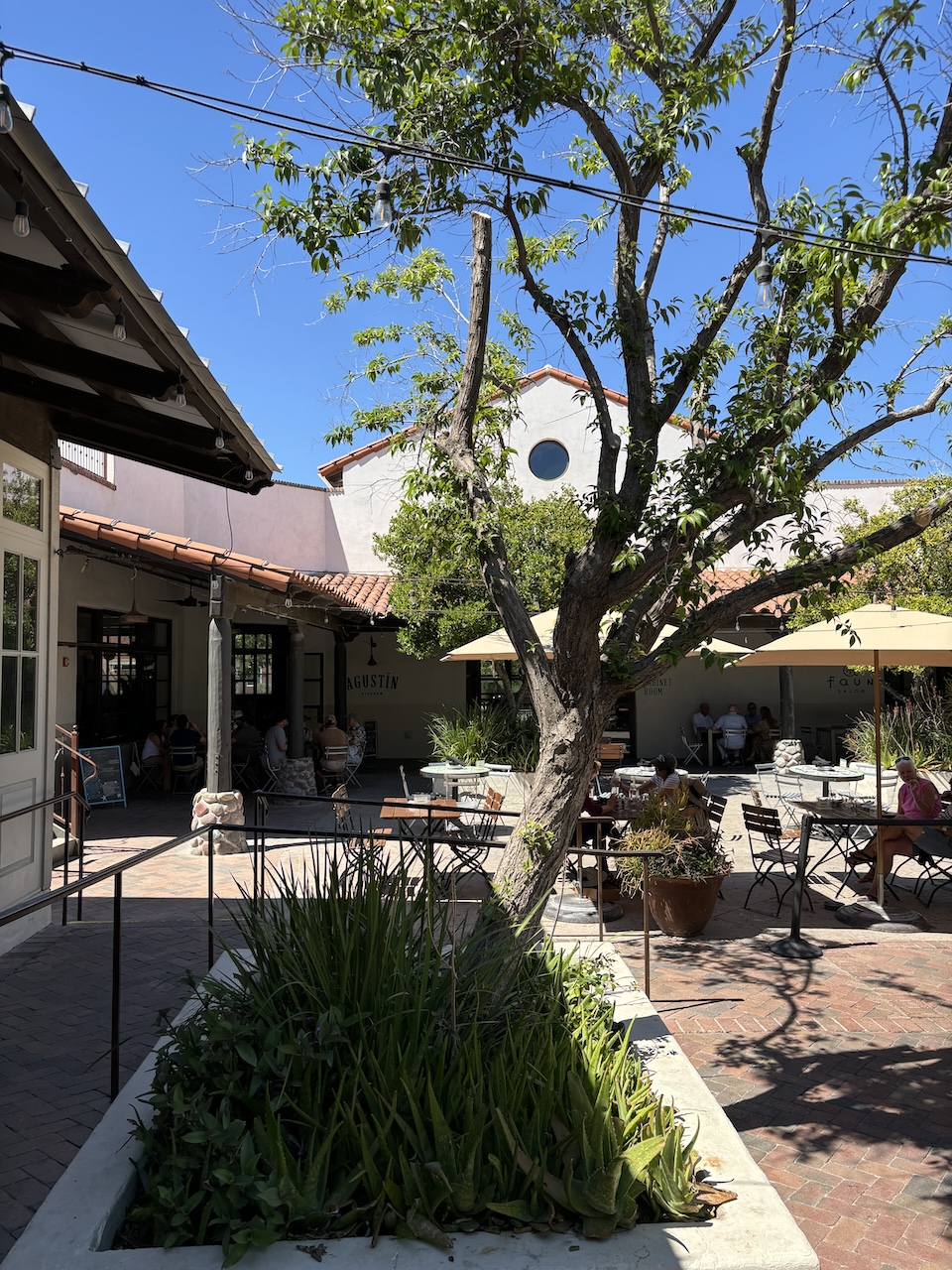
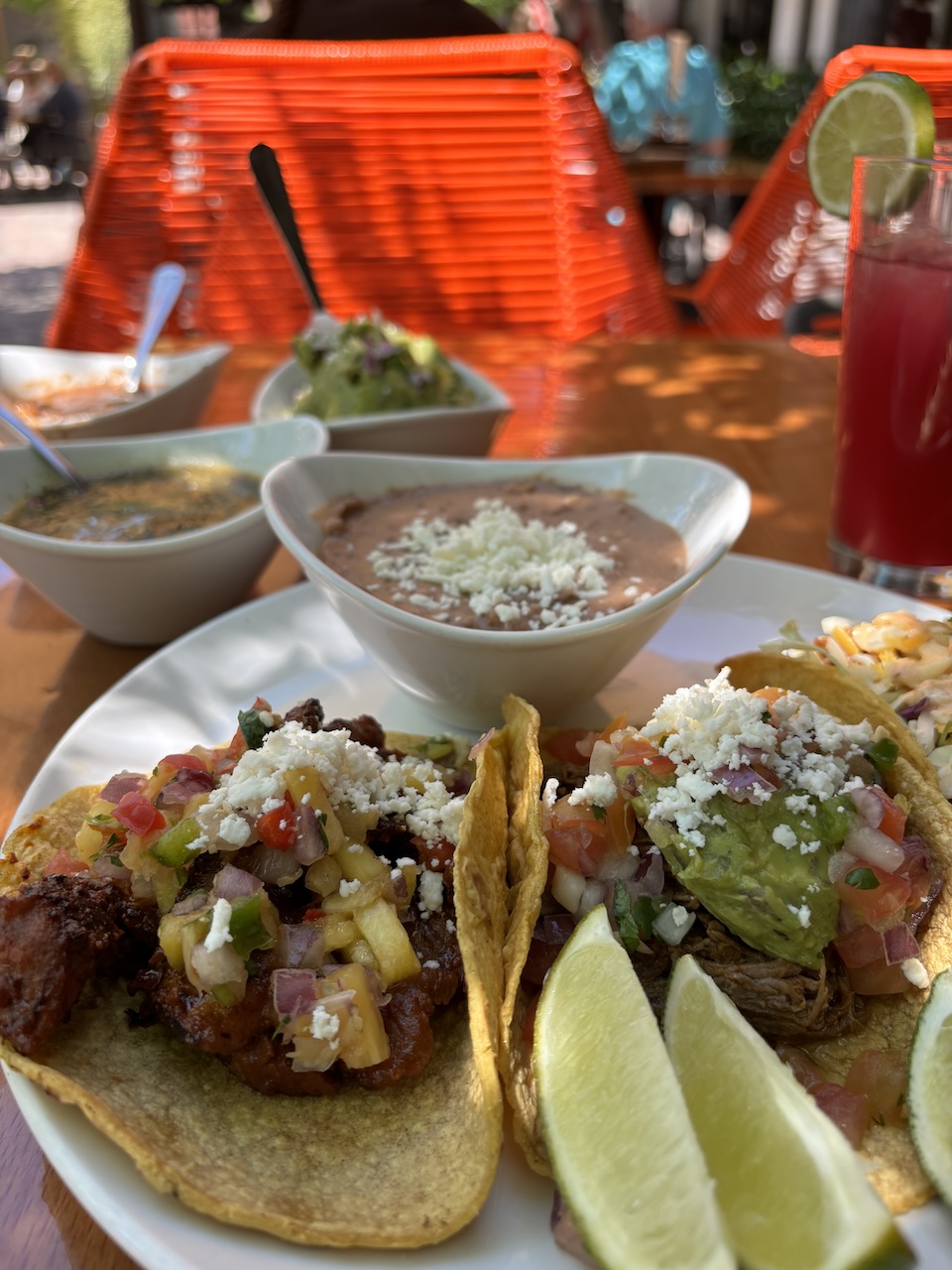

There are three locations in town, but I suggest trying the Seis Kitchen at the Mercado San Agustin. Dine amongst the shaded trees and misters within the open-air courtyard surrounded by local shops and art galleries. While you’re in the area, be sure to walk down to the MSA Annex. As an expansion of the Mercado San Agustin, the area is comprised of 15 locally owned small businesses housed inside modified shipping containers. There are several different food options to try here as well: Kukai Fresh Japanese Kitchen, Beaut Burger and Decibel Coffee Works.
Don’t miss out on dinner at Tito and Pep in Tucson’s midtown neighborhood. The relaxed Southwestern bistro focuses on its mesquite-fired cuisine and its crafty one-of-a-kind cocktails. Influenced by the multi-cultural history of the region, Chef Martinez created a menu that earned the restaurant a James Beard nod in 2022. A creative menu of grilled octopus, a whole red snapper that is dredged and deep fried, Sea of Cortez shrimp and seasonal menu items that will keep you coming back to see what’s new.
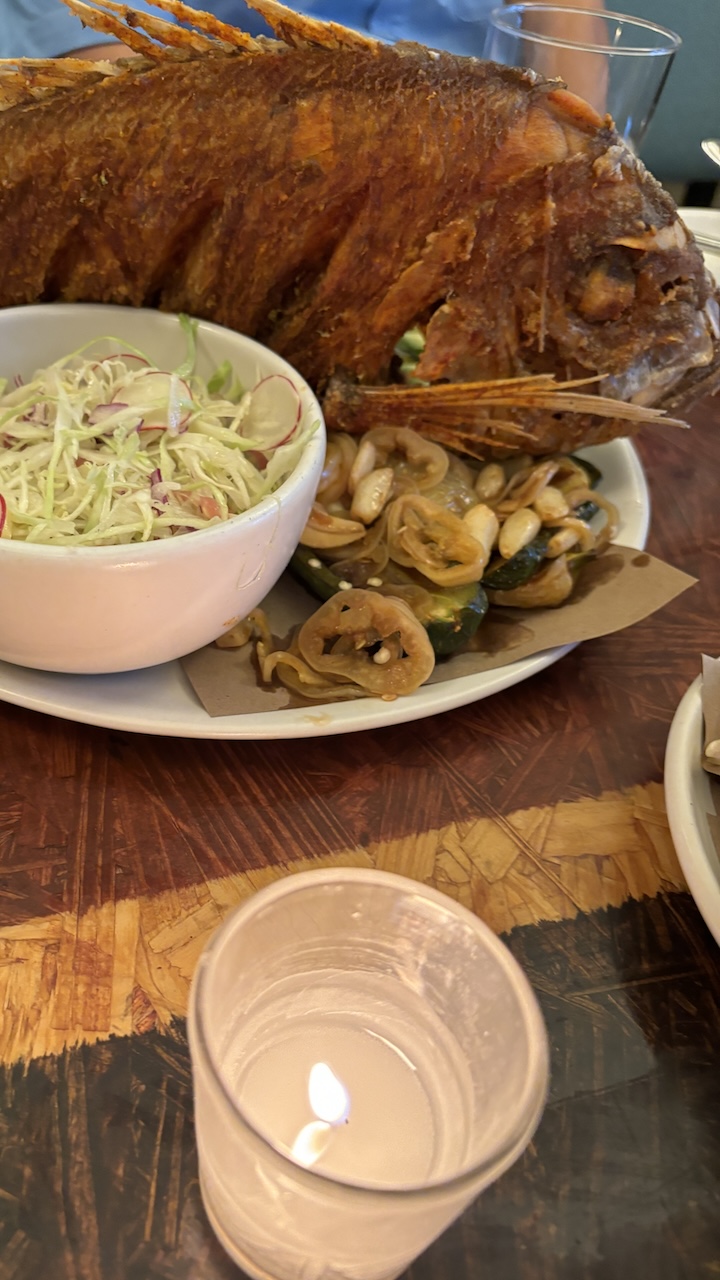
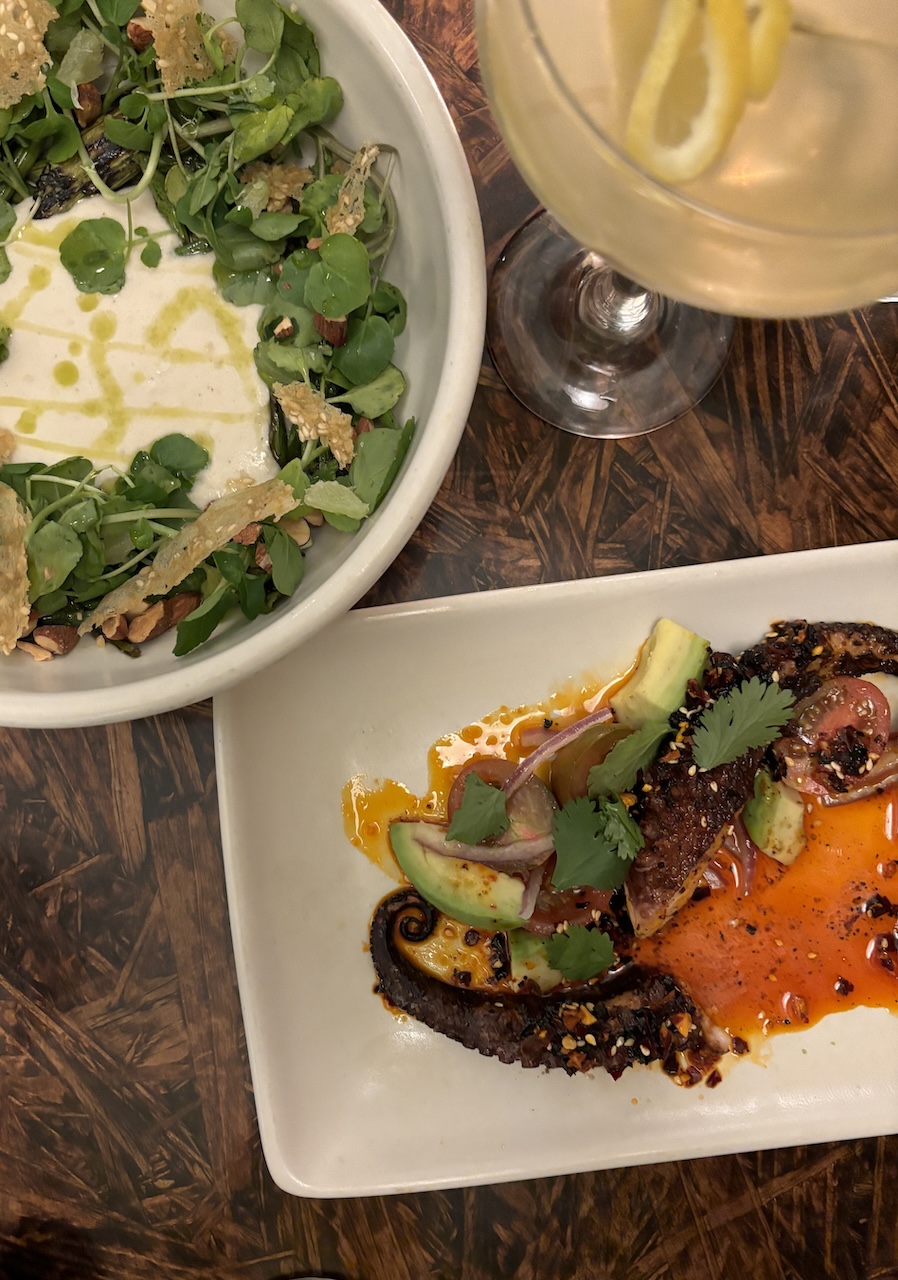
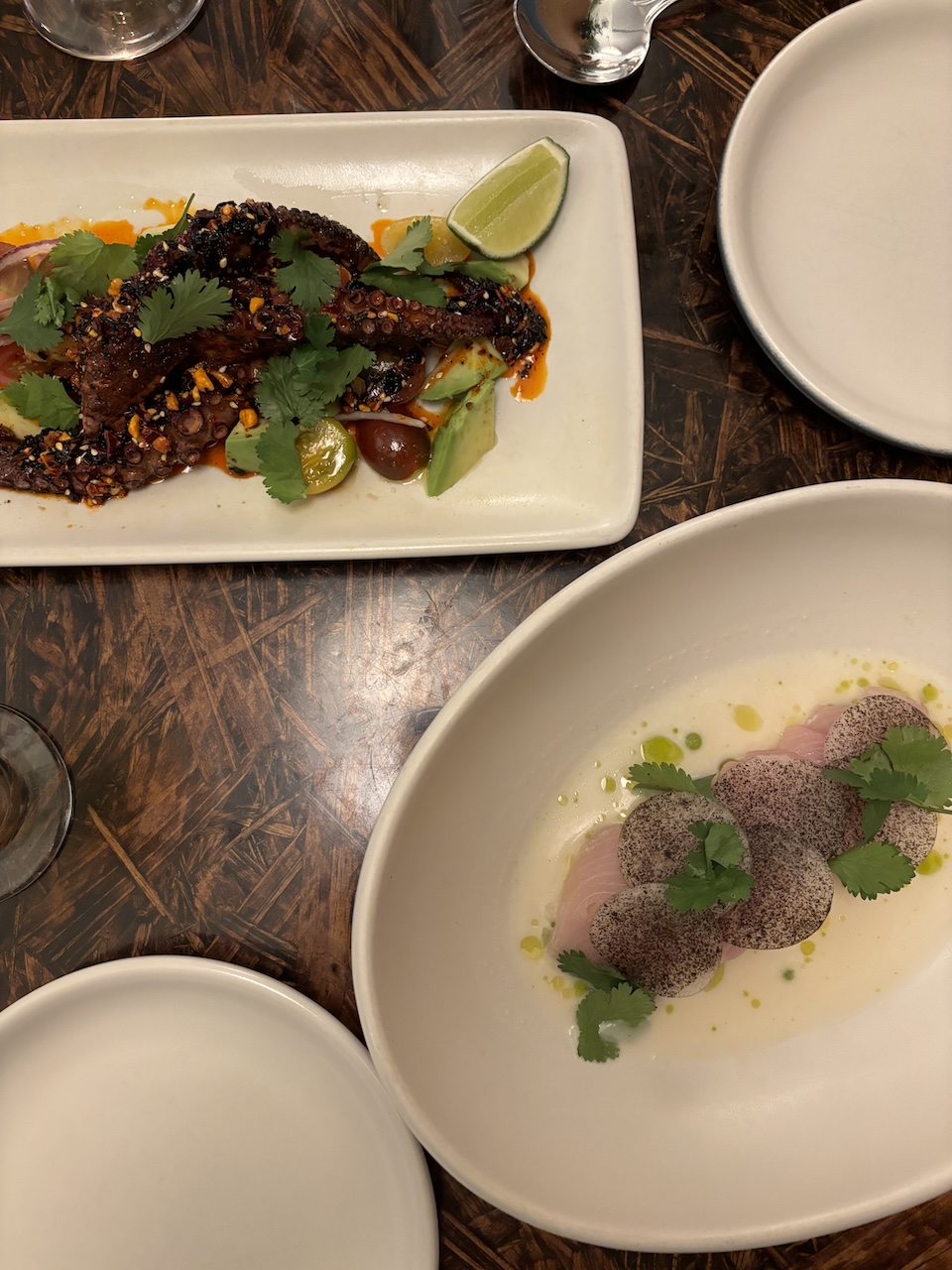
Helmed by chefs Chef Devon Sanner—who cooked under James Beard winner Janos Wilder— and Chef Mat Cable, Zio Peppe is another great dinner option. The food here feels fun and experimental, where tradition meets innovation, and where you can enjoy gourmet food in a casual setting. Start with the Elote Arancini made with street corn and risotto, then try one of their El Rustico Birria pizza—made with Chef Juan Almanza’s legendary beef birria.

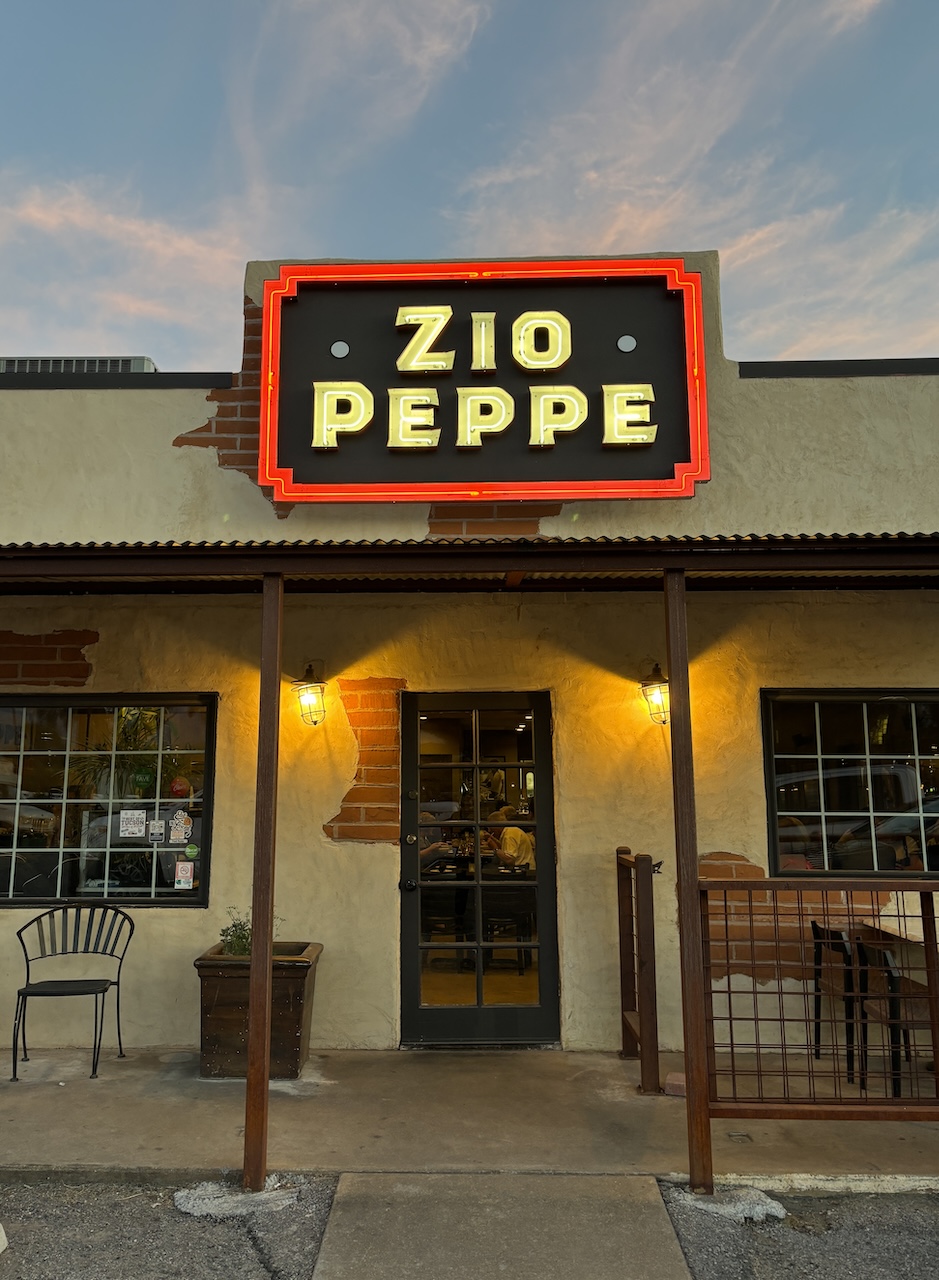

Breakfast is the most important meal of the day when you eat at Prep and Pastry. It would be sinful to leave without trying one of their many baked goods such as the Blueberry Lemon donut. If you’re in search of more sweet, stop in at La Estrella Bakery, a local staple serving fresh tortillas, Mexican sweet bread and other baked goods. And because locals love it so much here, the nearly 40-year-old restaurant opened its fourth location in Tucson this year.

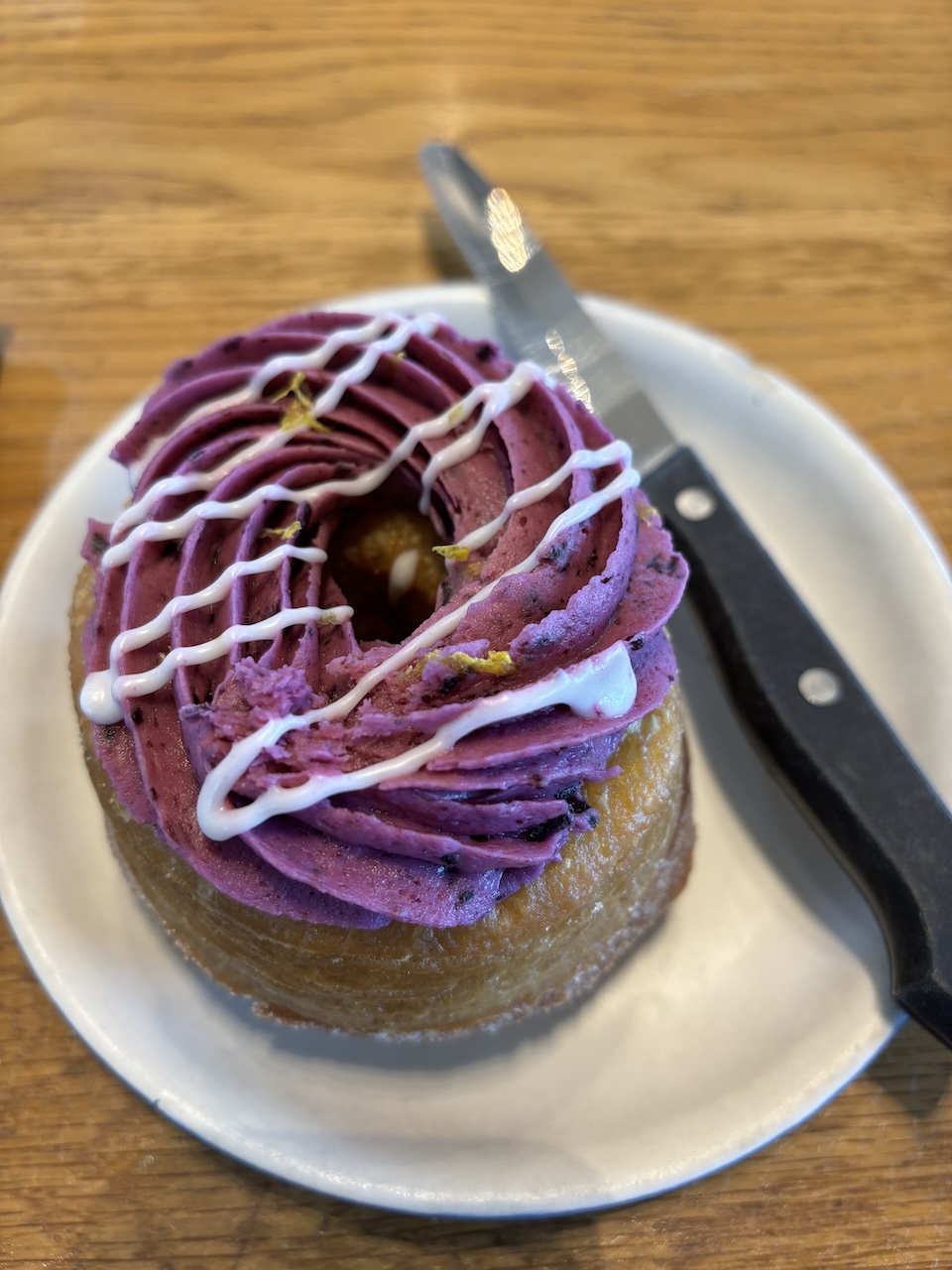

But you certainly don’t want to miss grabbing some artisanal bread from Barrio Bread. Don Guerra, the 2022 James Beard Award’s Outstanding Baker winner, is considered one of the founding fathers of the heritage grain movement. Guerra bakes his bread with grains that date back to the 17th century while mentoring Tucson refugees to establish their own food businesses.
For a full list of where to eat in Tucson, use the America’s Best Mexican Food Field Guide which highlights a trail of local Mexican restaurants giving users a taste of Tucson.
A vibrant arts and culture scene
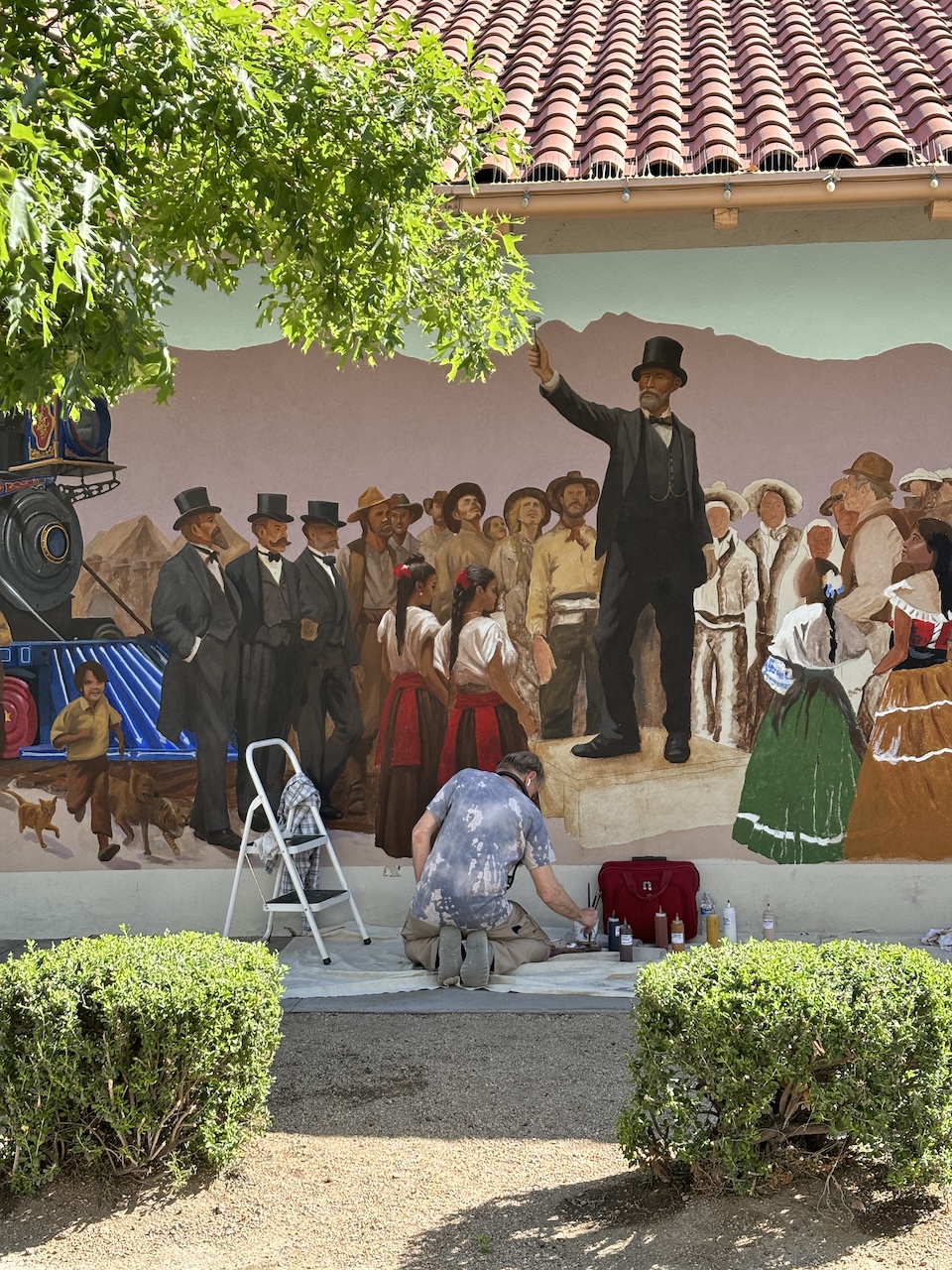
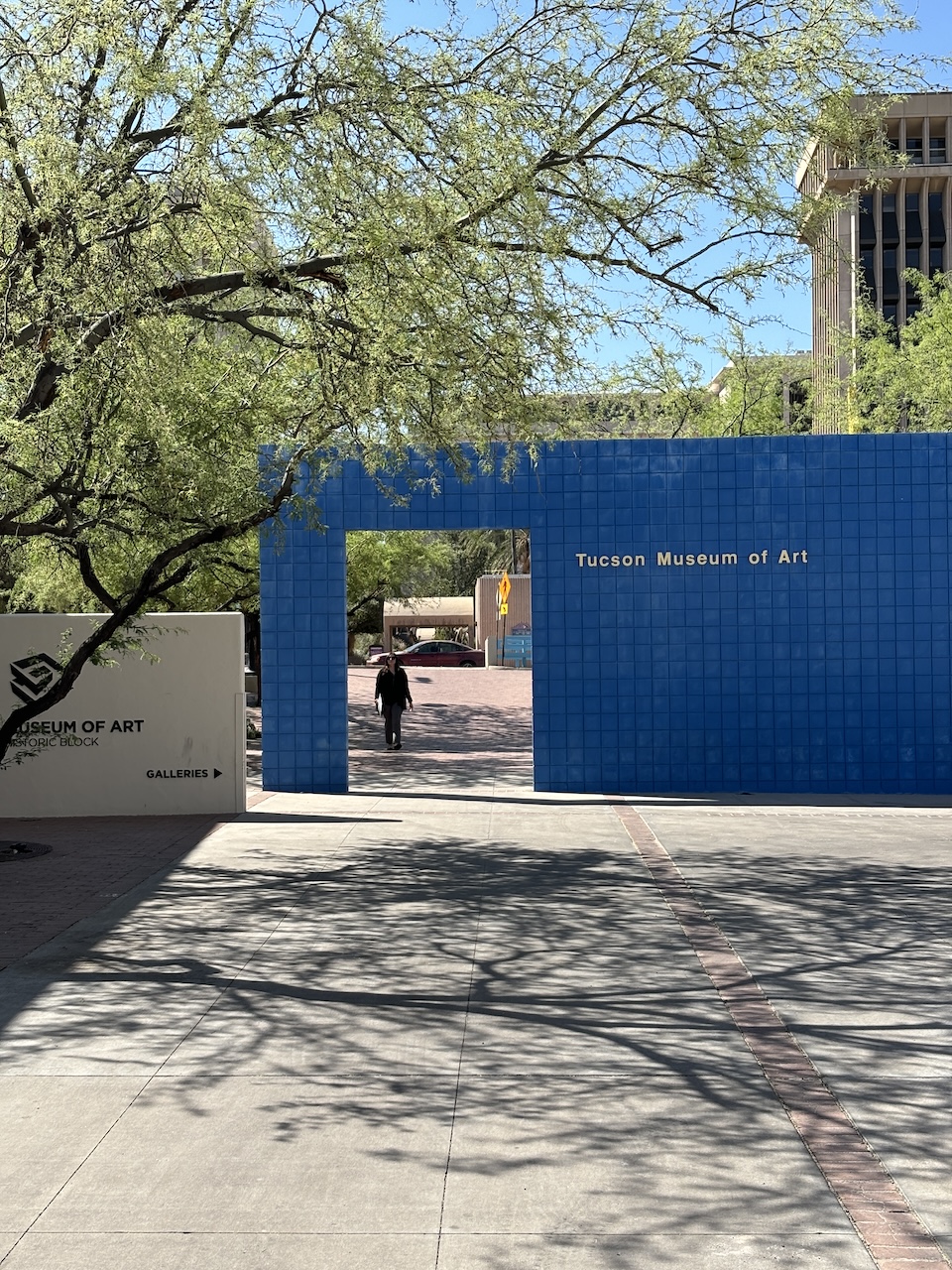
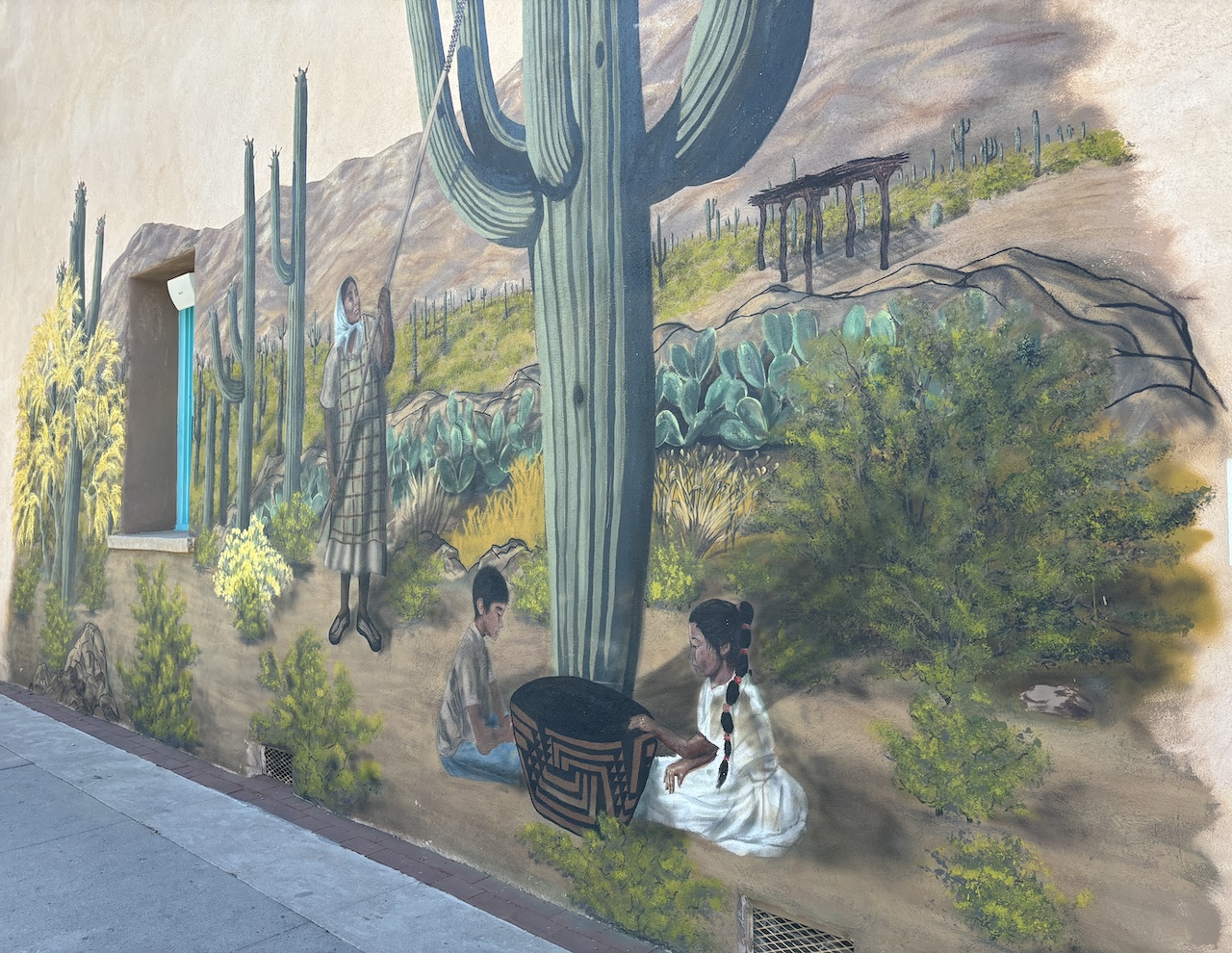
It’s no wonder that talented artists have flocked to the area with Tucson’s breathtaking natural landscapes and colorful culture. You can find this distinct creativity displayed throughout the city in the form of public art, galleries and museums.
This year is the best time to visit Tucson, Arizona with the Tucson Museum of Art celebrating its 100th anniversary, while new and inspiring area galleries such as the Blue Lotus Artists’ Collective (BLAC)—a non-profit gallery space dedicated to supporting and uplifting Black Artists—are making a name for themselves in the few years of its opening. Explore some of the city’s historic landmarks that are works of art themselves like Presidio Park, St. Augustine Cathedral and the beautiful historic homes in the El Presidio Historic District.

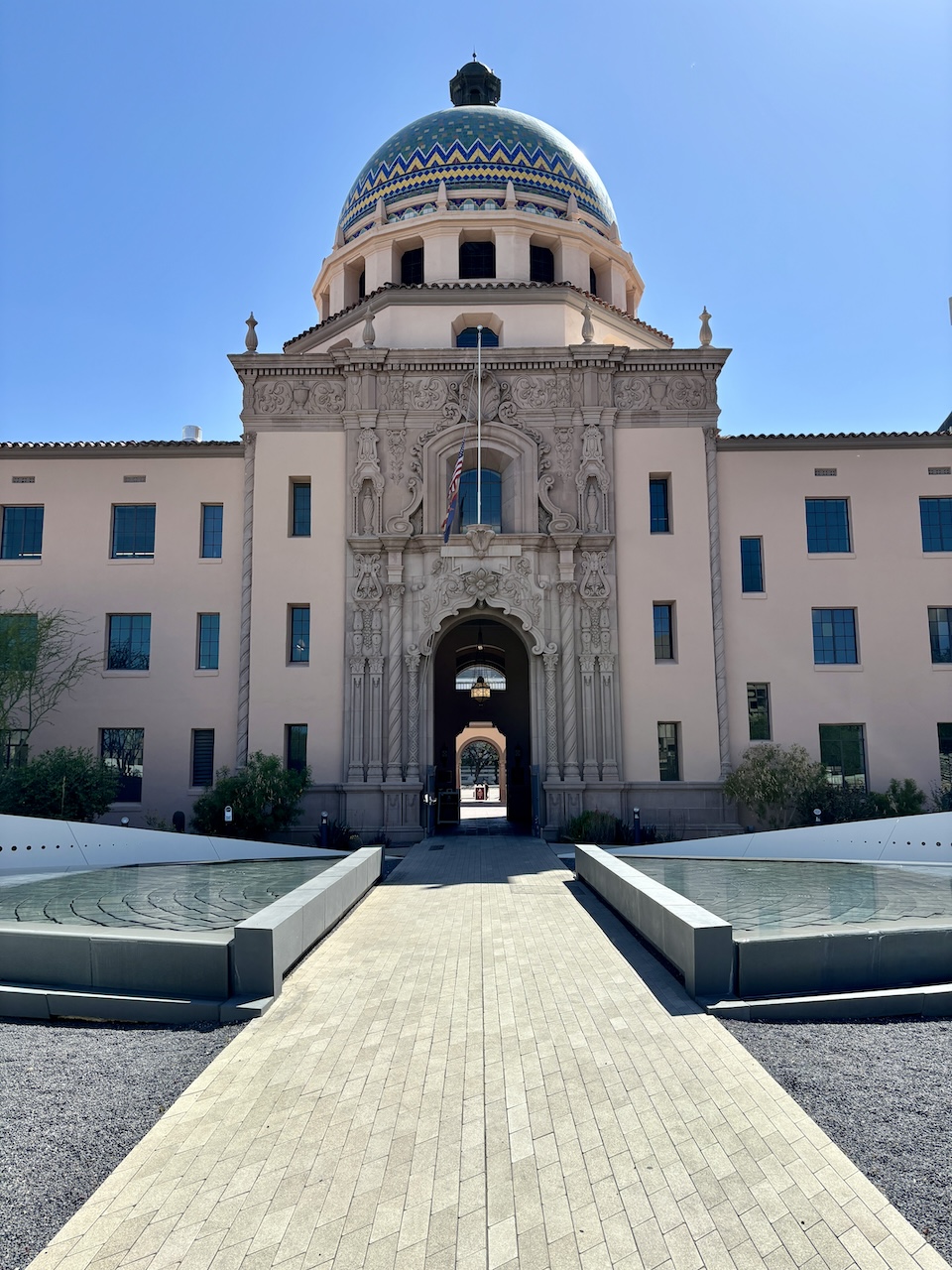
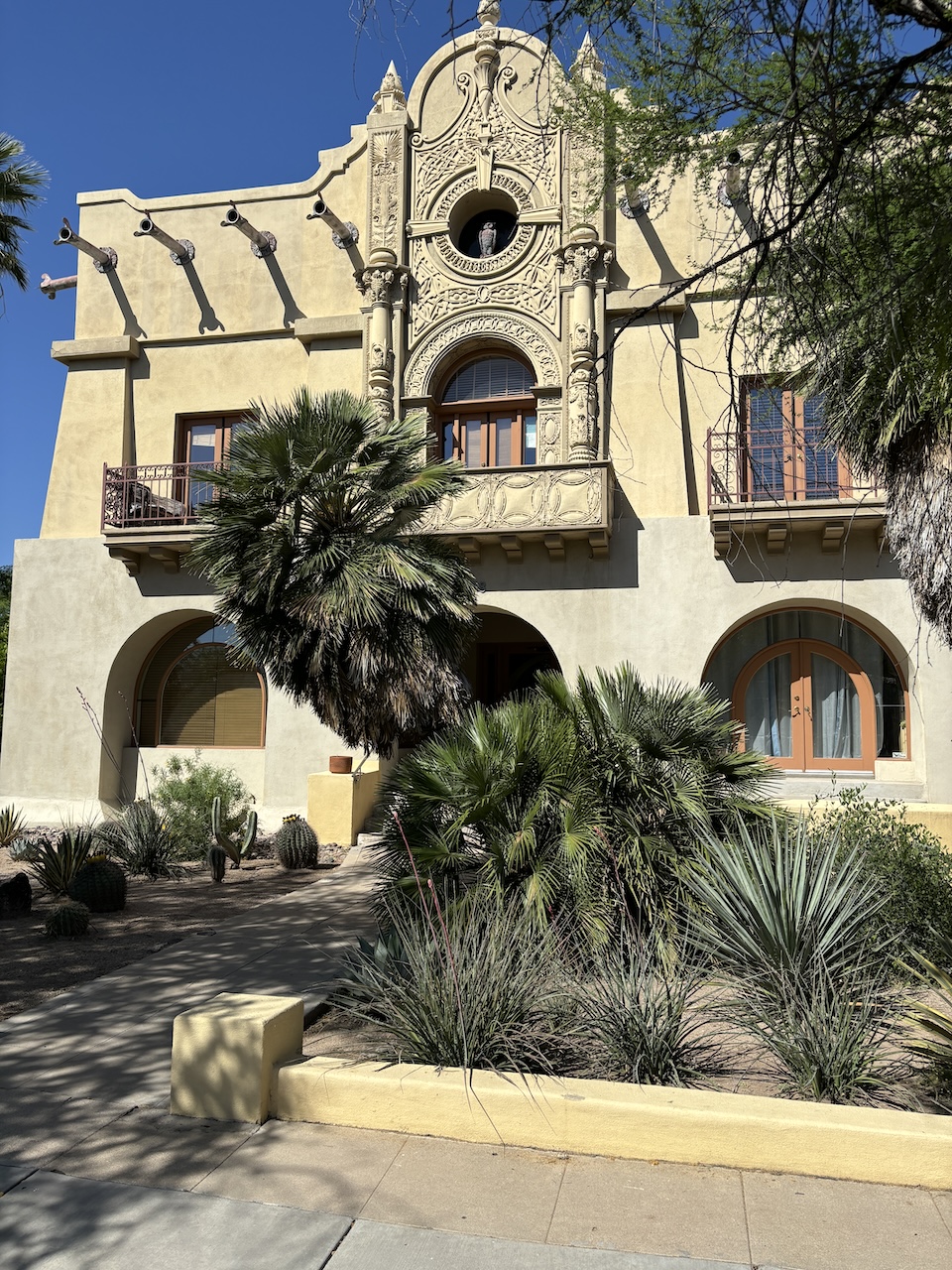
Take a tour of the Barrio Viejo Neighborhood
Named as one of the “Best Places to Go in 2024” by Conde Nast Traveler, the Barrio Viejo Neighborhood in Tucson’s downtown is an excellent example of a community coming together to save a historic treasure. What was destined for complete demolition, the neighborhood was saved due to the historical designation of El Tiradito Wishing Shrine — the only Catholic Shrine in the country dedicated to a sinner instead of a saint. With dedicated efforts from the community, the shrine was designated a National Historic Landmark, helping to preserve the rest of the neighborhood.
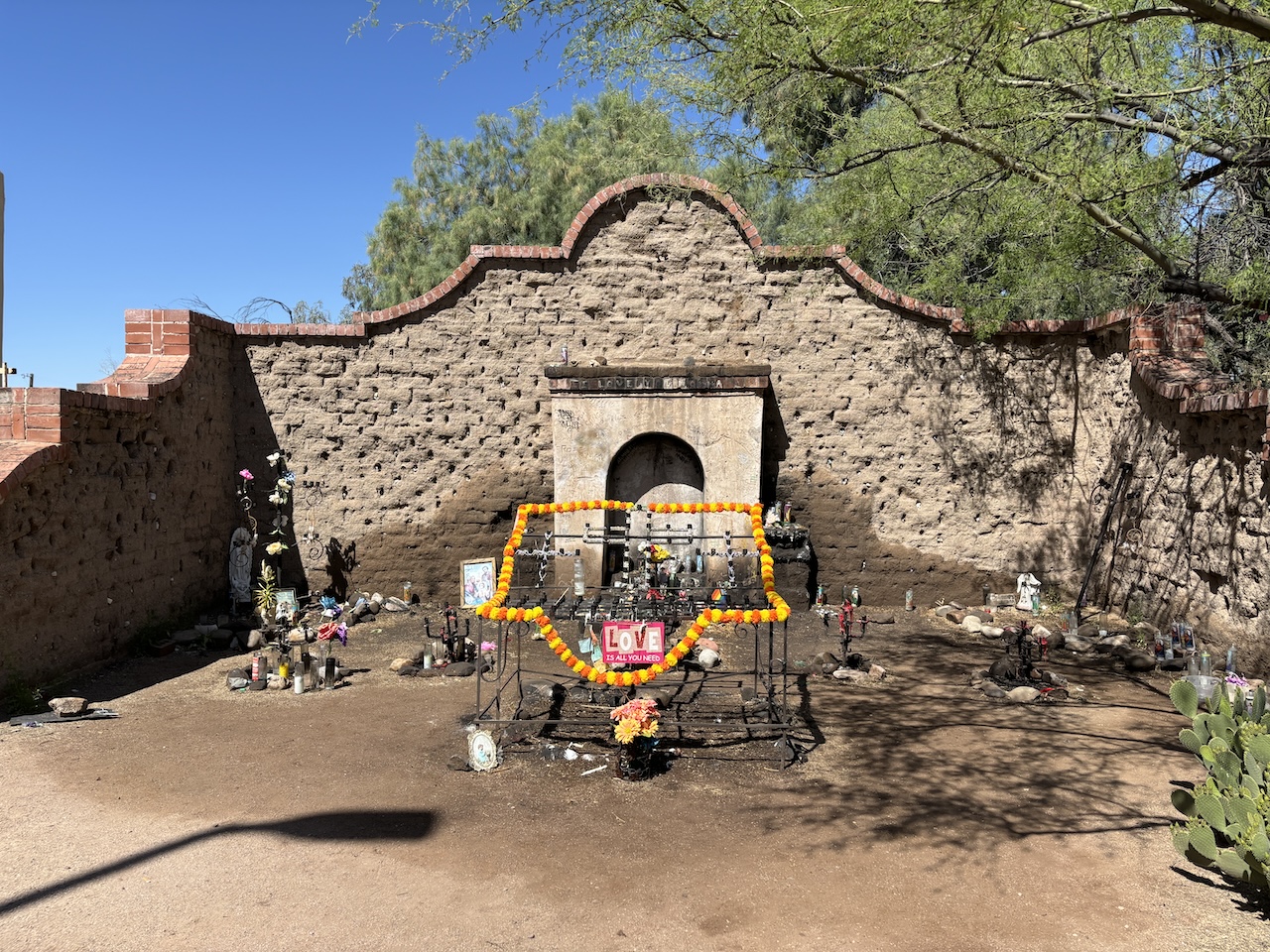
There’s so much to explore here with its hyper-regional architectural style known as the adobe Sonoran Row Houses, the barrio’s flourishing art scene with the famous Afghan Girl by photographer Steve McCurry at Etherton Gallery and some of Tucson’s most notable restaurants including 5 Points Market and Restaurant, EXO Roast Co. and Cafe Desta.
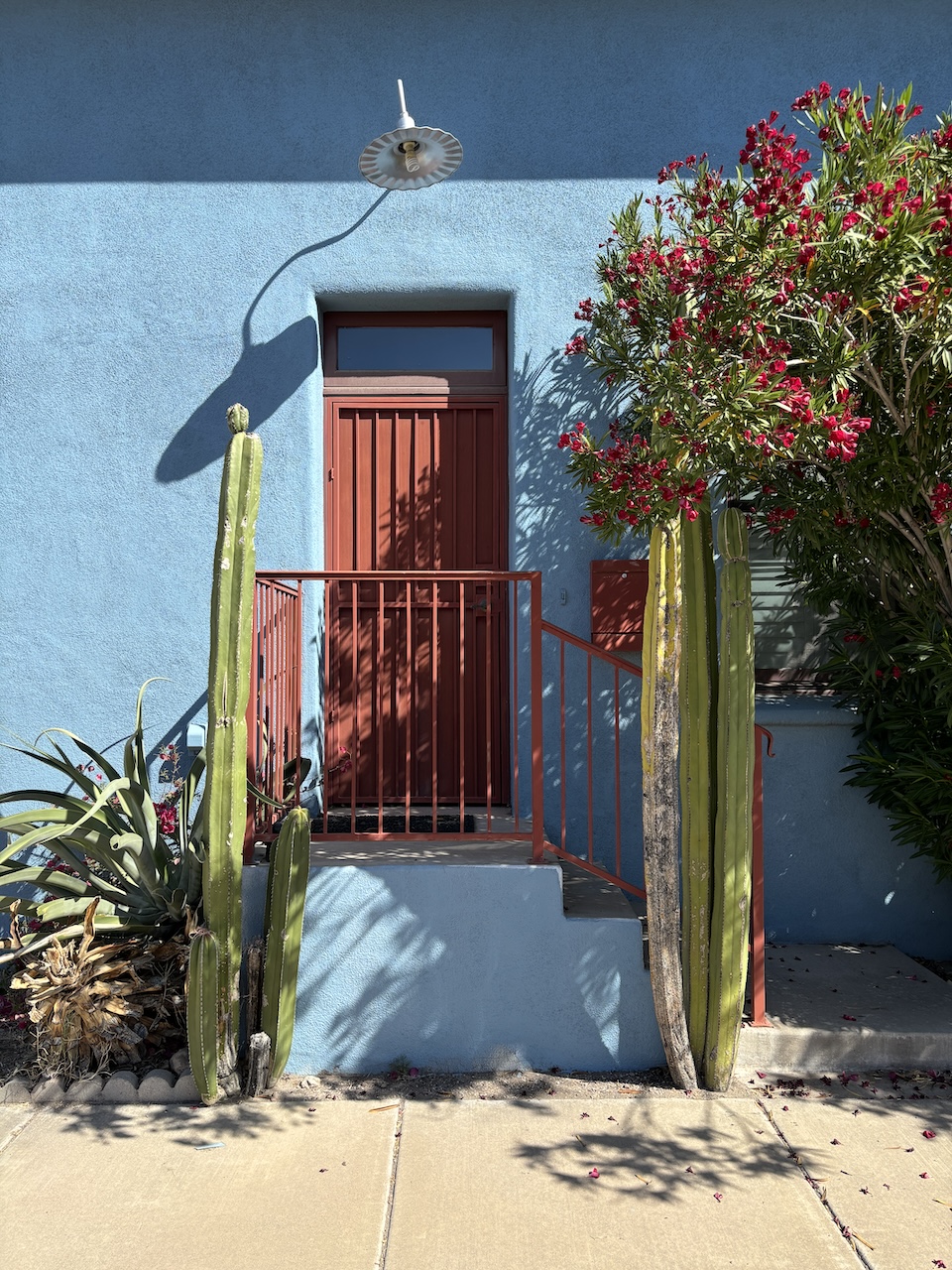
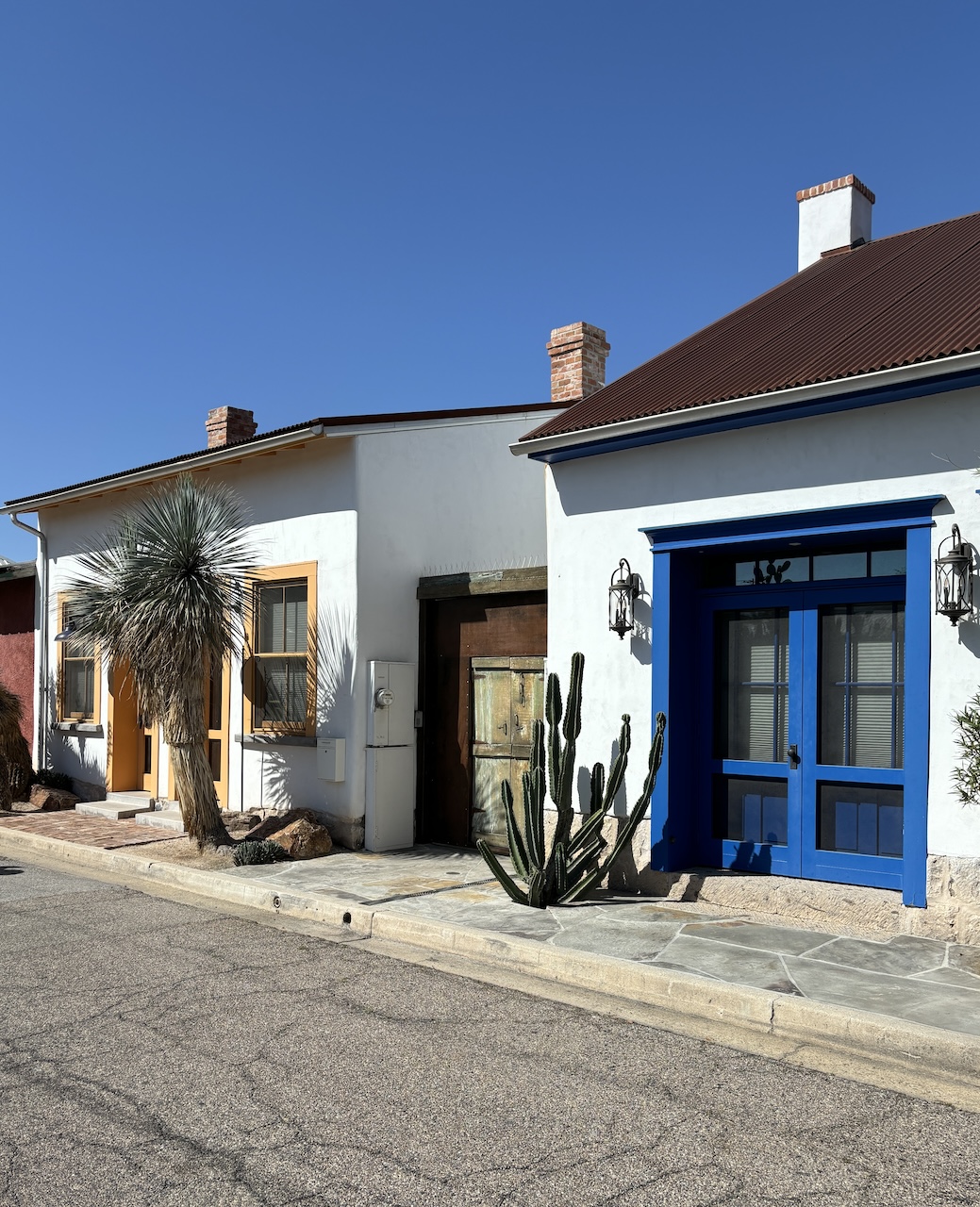
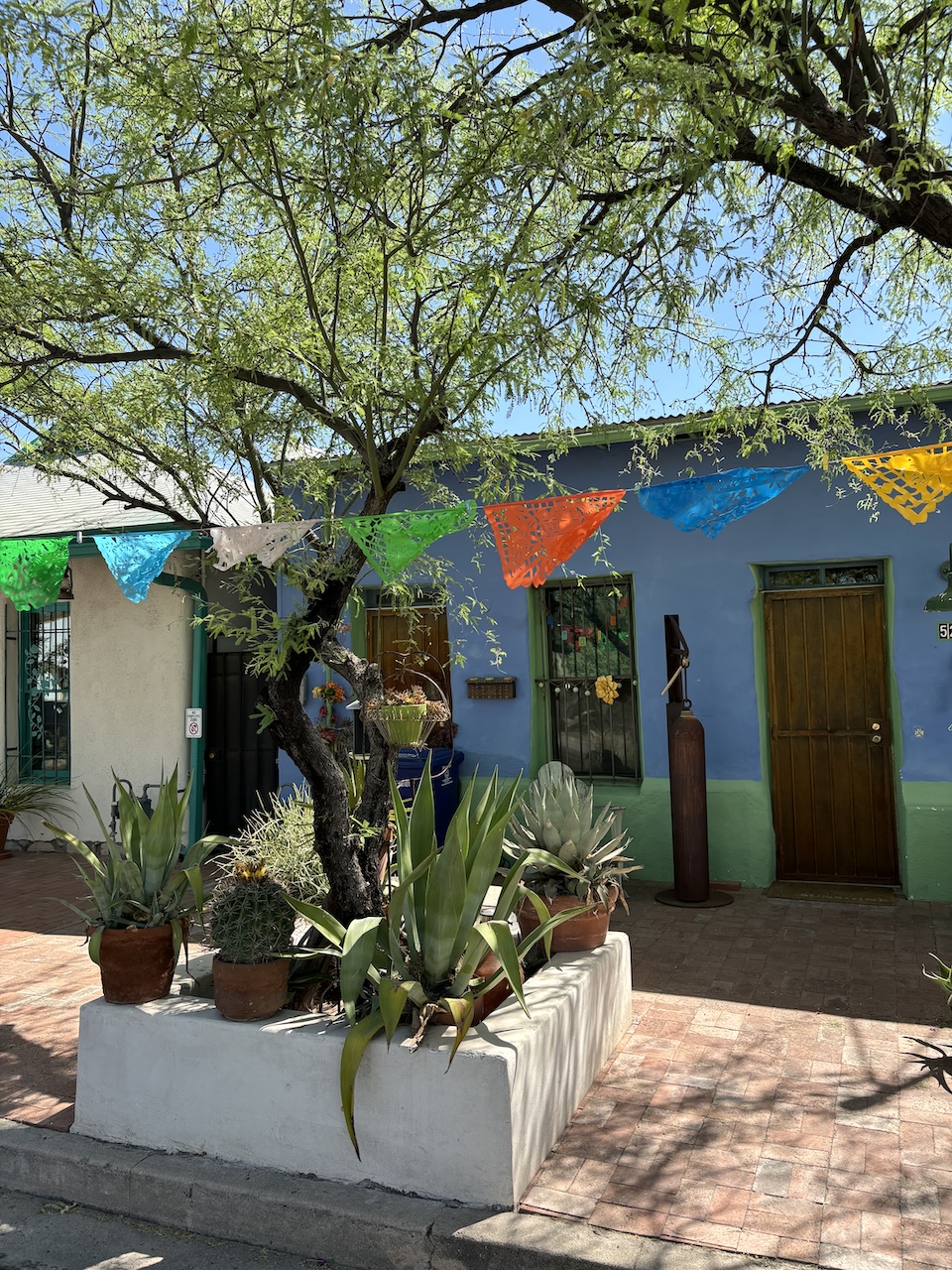
But it’s not just the area’s colorful culinary and art scene that draws you in, the Barrio Viejo Neighborhood has celebrated some notable improvements with its historical preservation efforts including the restoration of Teatro Carmen—Tucson’s first Spanish-speaking theatre. Because of these restoration efforts, the Barrio Viejo will receive a National Historic Landmark designation in 2024.
See all the highlights and take in the sites and sounds of the largest barrio in the U.S. with a bike tour with Tucson Bike Tours.
Visit the DeGrazia Gallery
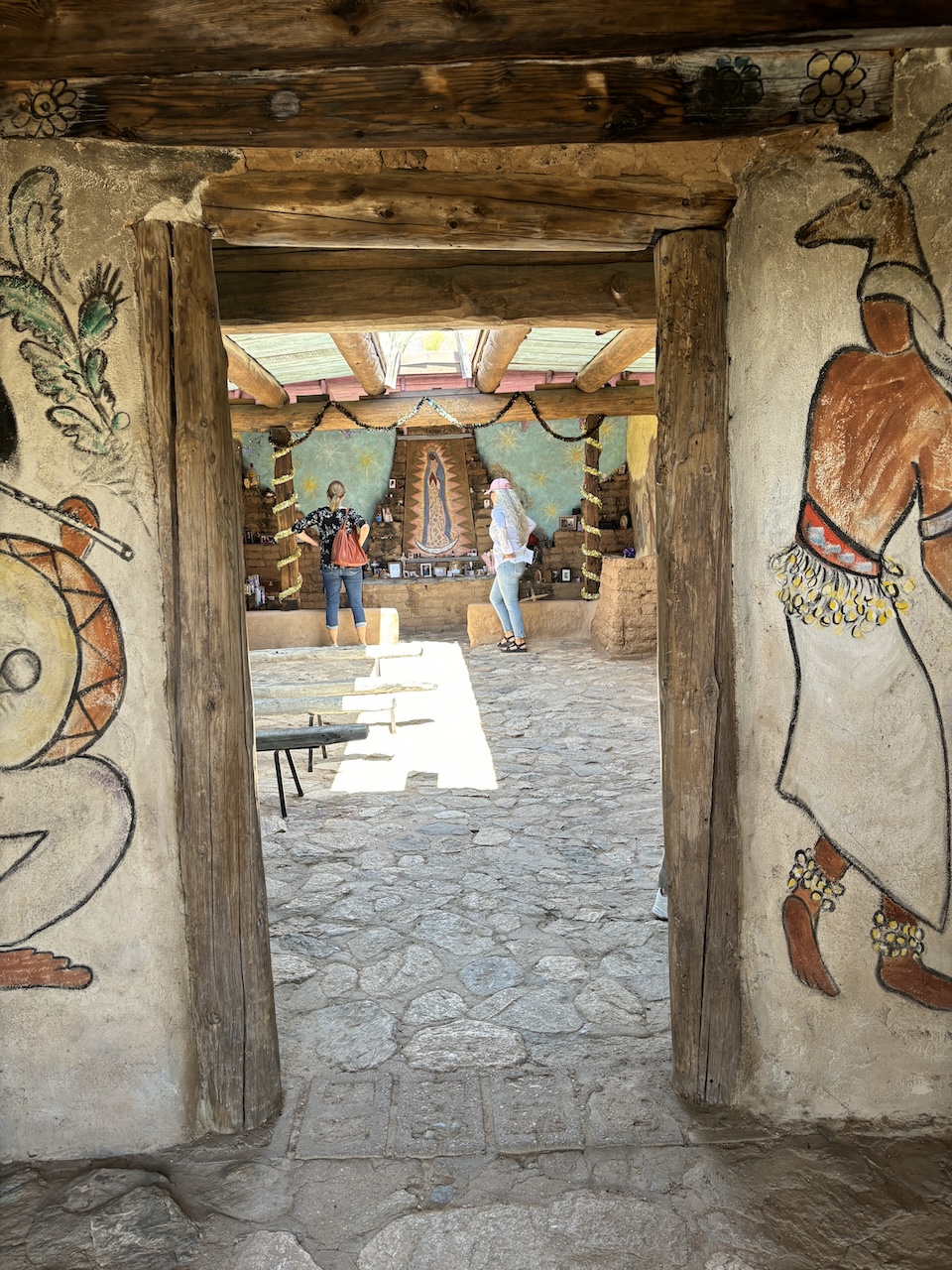
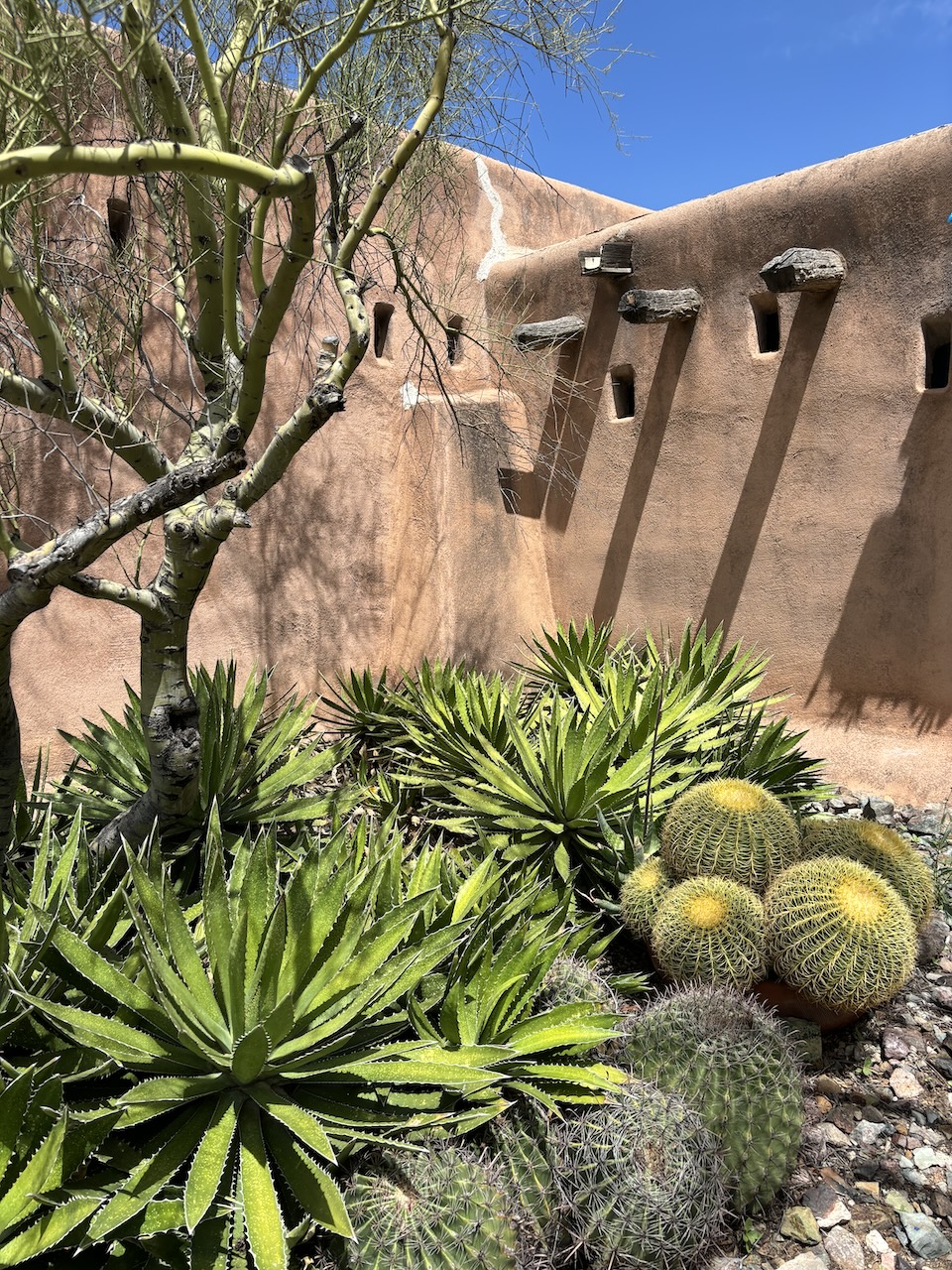
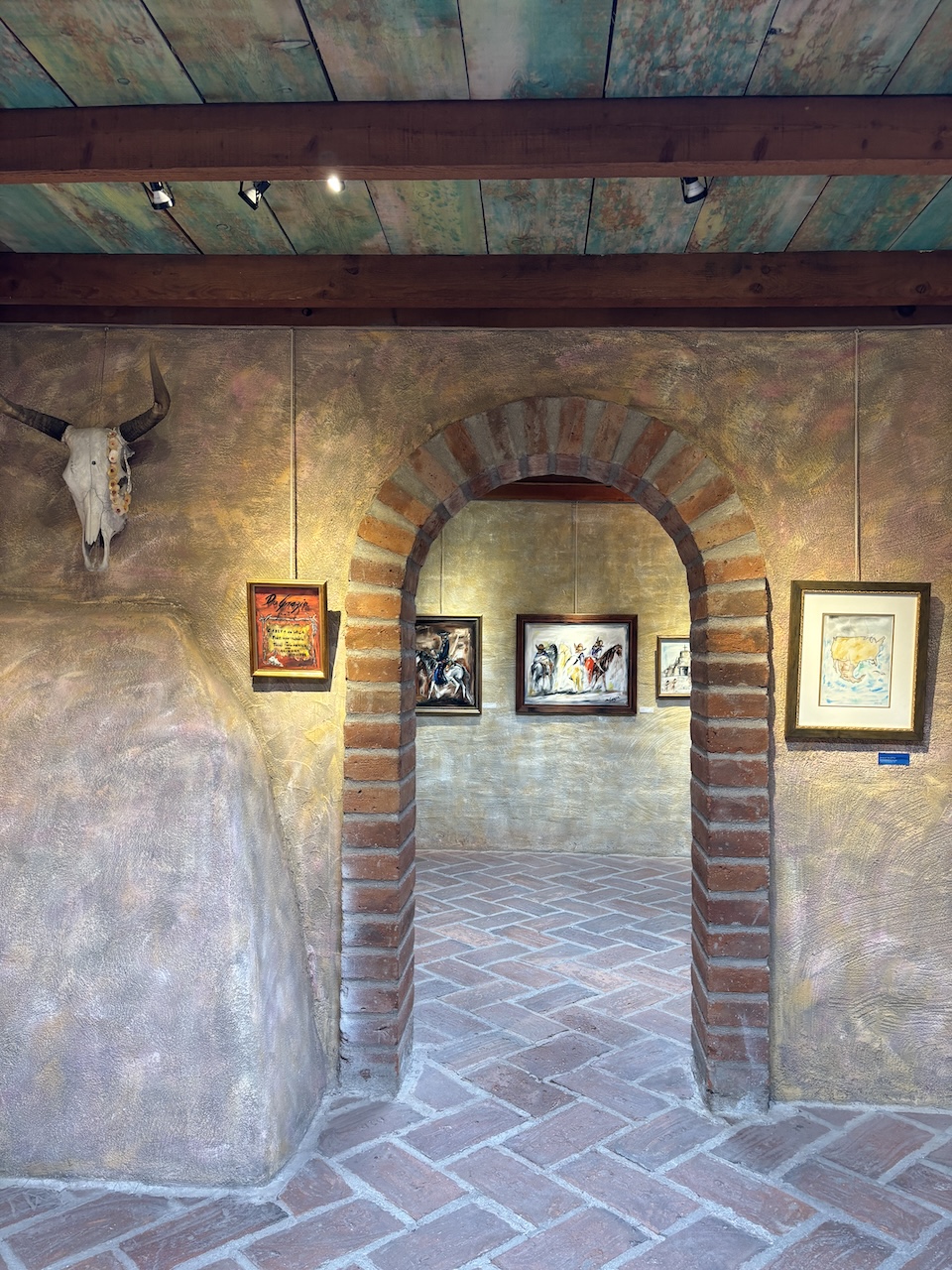
Outside of Tucson’s downtown, lies somewhat of a hidden gem and a must-visit for any art enthusiast. The DeGrazia Gallery in the Sun is one of those places that inspires all who walk through its doors.
Located in the foothills of Tucson’s Santa Catalina Mountains, the picturesque property was built and designed by Arizona artist Ettore “Ted” DeGrazia. Somewhat of a Tucson legend, DeGrazia made a name for himself painting the native cultures of the Sonoran Desert. When a reproduction print of his “Los Ninos” painting for UNICEF sold millions of copies, he soon became the most-reproduced artist in the world.
Crafted using traditional adobe bricks, the house was built to house DeGrazia’a paintings. Now, the home’s interior walls display more than 15,000 DeGrazia originals. Outside, you’ll find dense gardens filled with flowering flora, prickly cacti and artwork scattered throughout. Don’t skip the adjoining Mission in the Sun—a Spanish-style mission with an open-air ceiling and DeGrazia murals.
Mission San Xavier
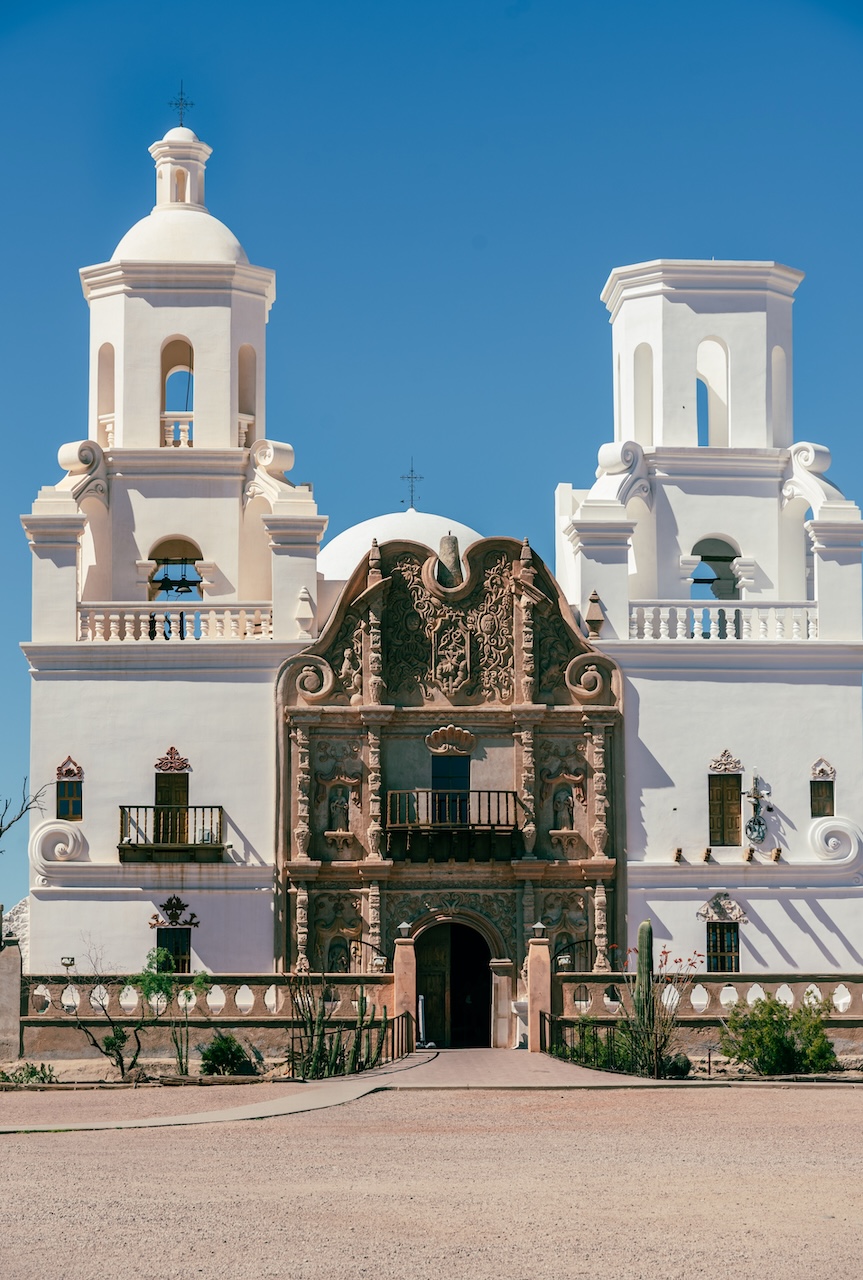

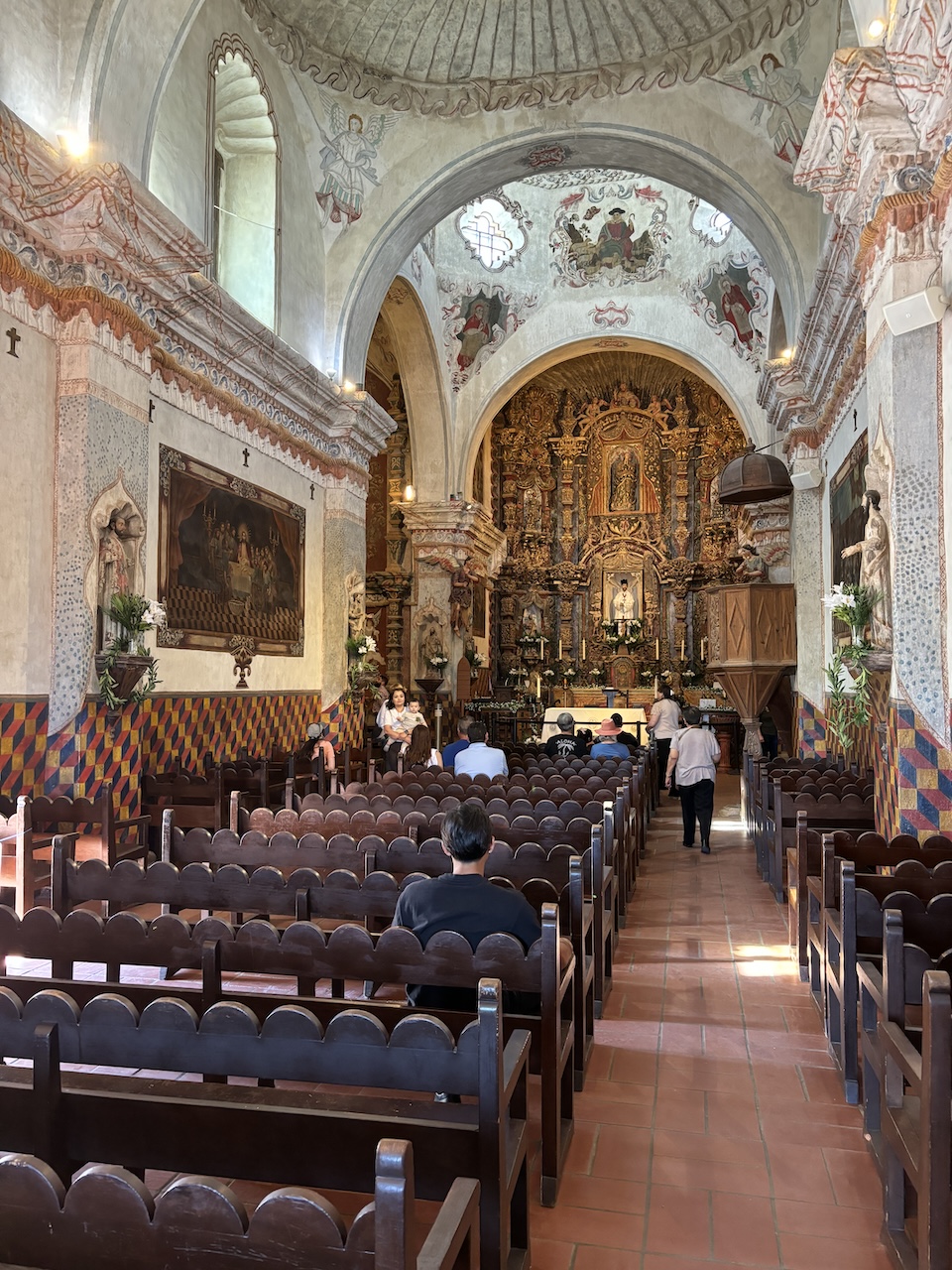
A symbol of the Southwest, the Spanish Missions are uniquely characterized by the legacy of two distinct cutlures—Catholic Europeans and Native Americans. The Mission San Xavier del Bac is one of the most distinguished Spanish Catholic Churches in the country. Located on the Tohono O’Odham Indian Reservation, the active Franciscan mission was built in 1797 and is the oldest intact European structure in the state.
Outside, the architectural masterpiece, with its pristine white walls, seemed to rise from the desert floor, as if a mirage, making it obvious why so many refer to it as the “Dove of the Desert.” A landscape of succulents and cacti adorn its exterior, while intricate carvings of the Franciscan coat of arms make this mission a true work of art.
Stepping inside, I instantly came to a standstill as I took the time to admire the impressive display of religious art that has given the mission its nickname; “Sistine Chapel of North America.” Decades of restoration have made this mission the best-preserved example of Spanish Colonial architecture in the U.S. Spend some time walking the grounds and stepping inside the chapel for a moment of quiet contemplation.
Explore the outdoors
Situated in the heart of the Sonoran Desert, Tucson is surrounded by five mountain ranges, creating a haven for outdoor adventures. Known as “The Green Desert,” the Sonoran Desert is home to a vast variety of vegetation due to its significant rainfall during monsoon seasons. Trails for hikers, bikers and horseback riders all reveal the desert’s unique landscape with mountainous terrain, flowering cacti and lush forests.
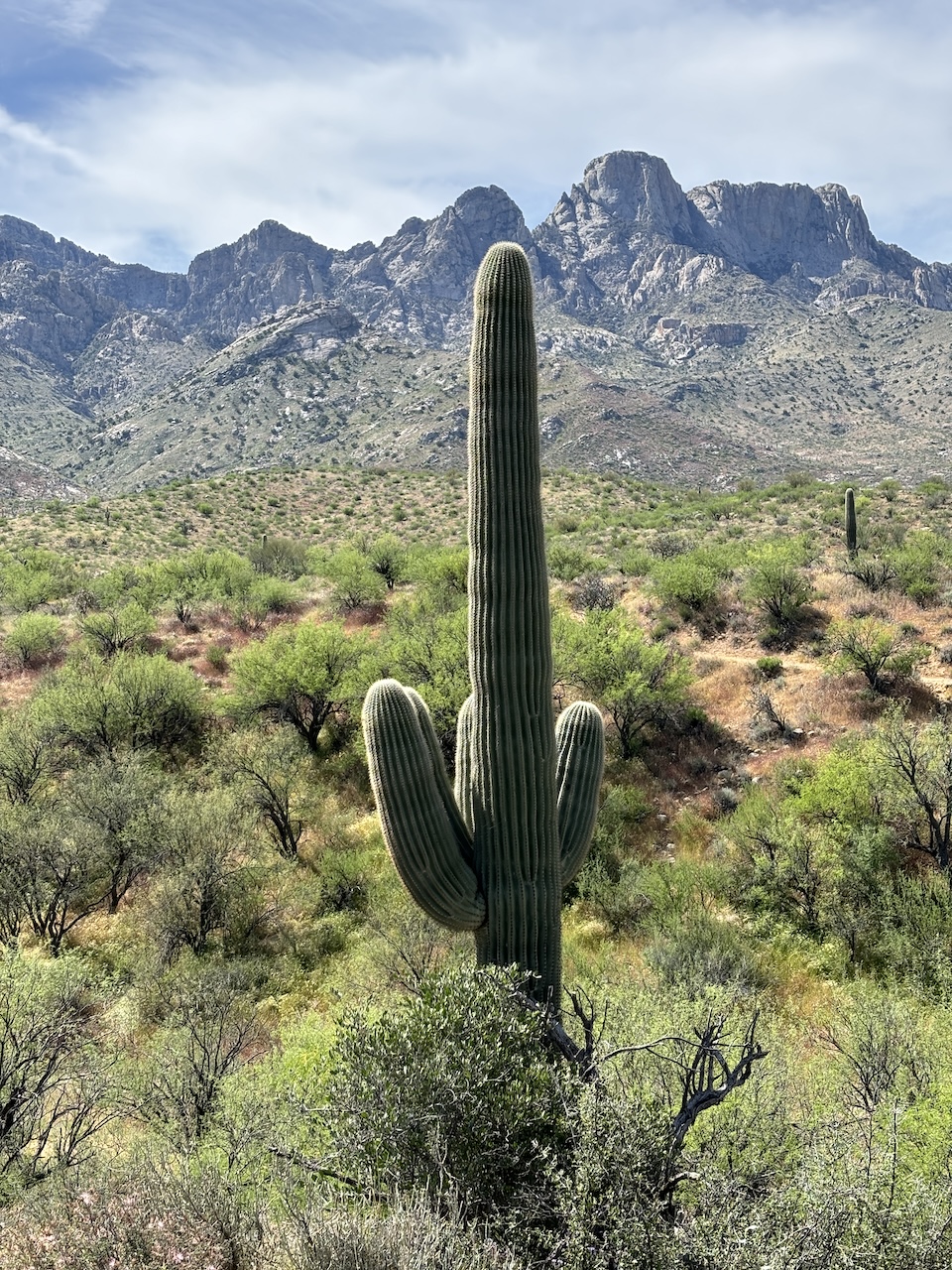
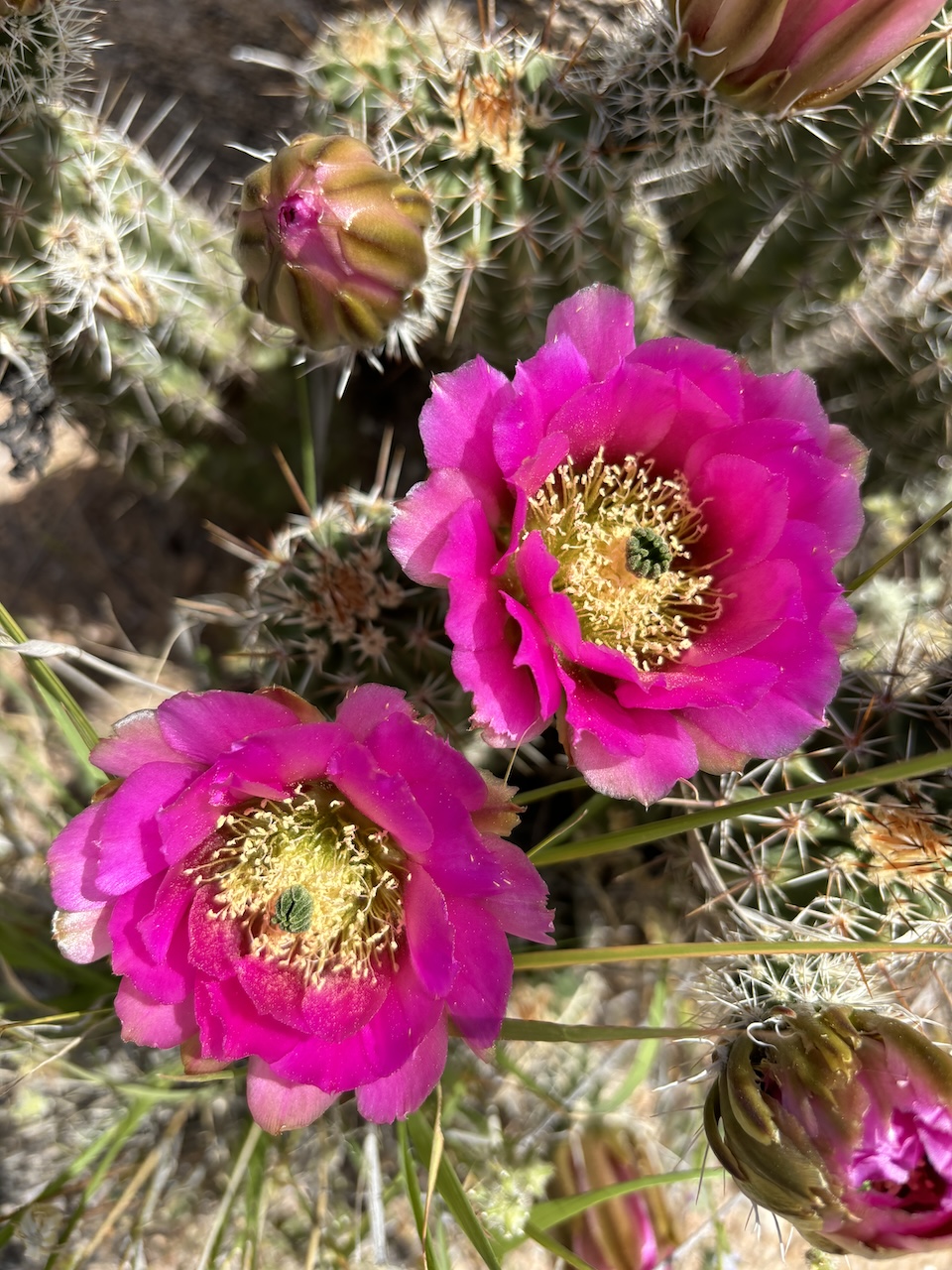
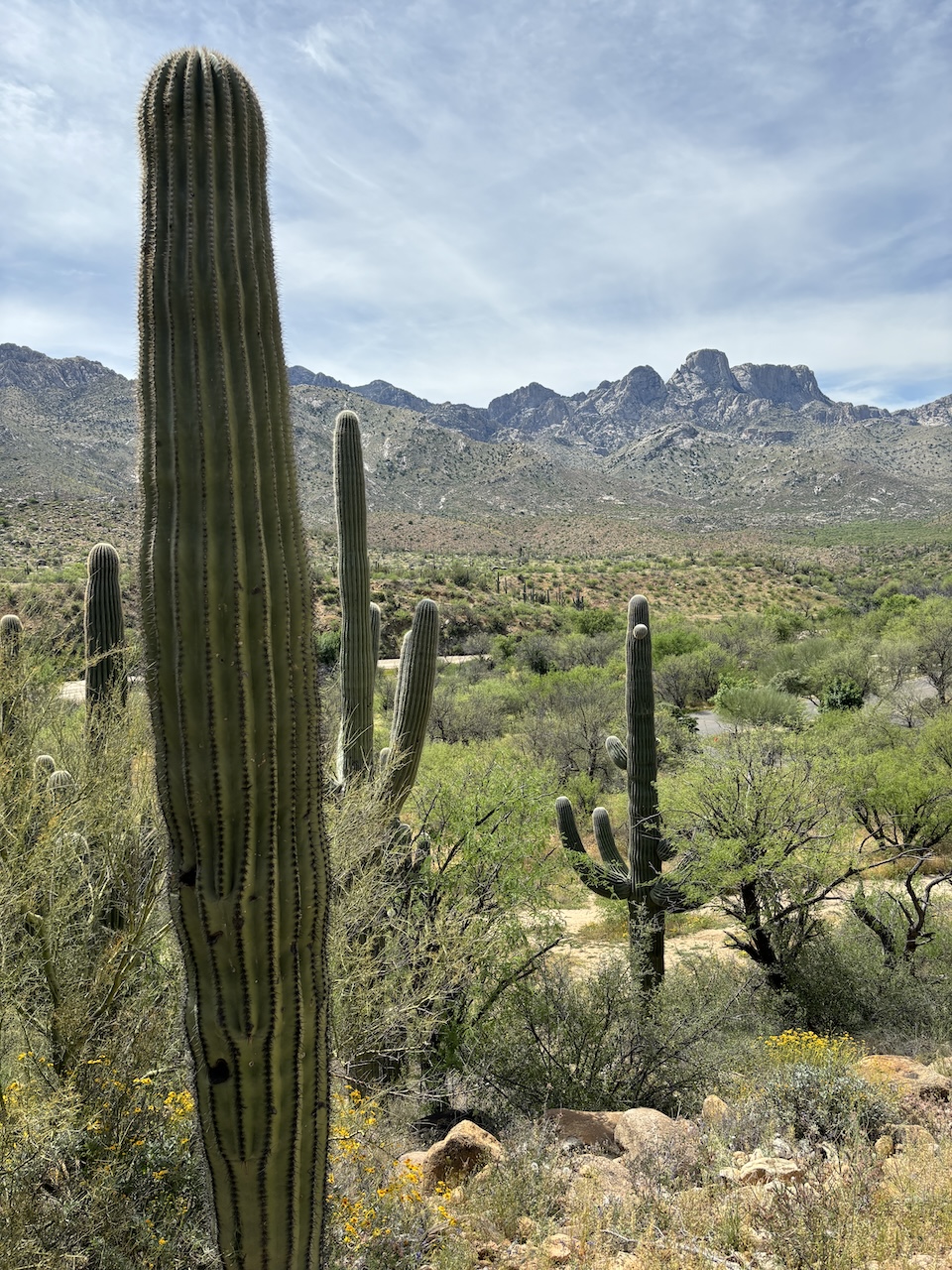
Similar to Denver, you’ll find a variety of trails in under an hour’s drive of the city (and without all the I-70 traffic). Nearby destinations include Sabino Canyon Recreation Area, Catalina State Park, Tumamoc Hill, Madera Canyon, Redington Pass, Tucson Mountain Park and Mount Lemmon. Plus, Coronado National Forest, home to the Santa Catalina mountain range, is home to more than 50 peaks for hiking, biking and climbing.
Saguaro National Park
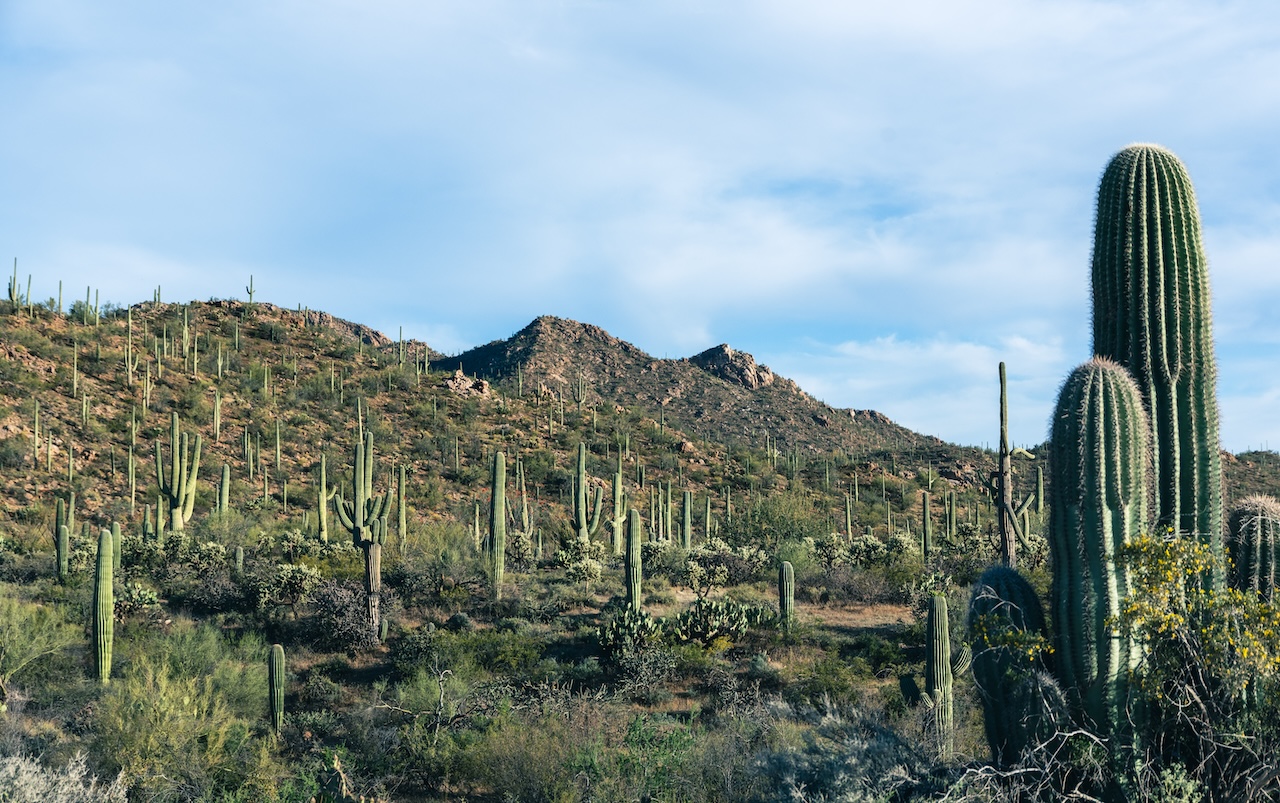
The city’s most iconic outdoor destination is the Saguaro National Park. Tucson’s most notable symbol is the giant Saguaro cactus—North America’s largest cacti. Only found in the Sonoran Desert, the Saguaros are a rare breed. And because these cacti are slow growing (taking up to 100 years before growing their arms), they are protected by Saguaro National Park.
Sandwiched on either side of the city are the Saguaro National Park East and West, offering some of the most scenic, saguaro-studded treks in the region. It’s hard to miss the thousands of towering Saguaro cacti filling the landscape and protruding past the horizon for a unique view you won’t find anywhere else.
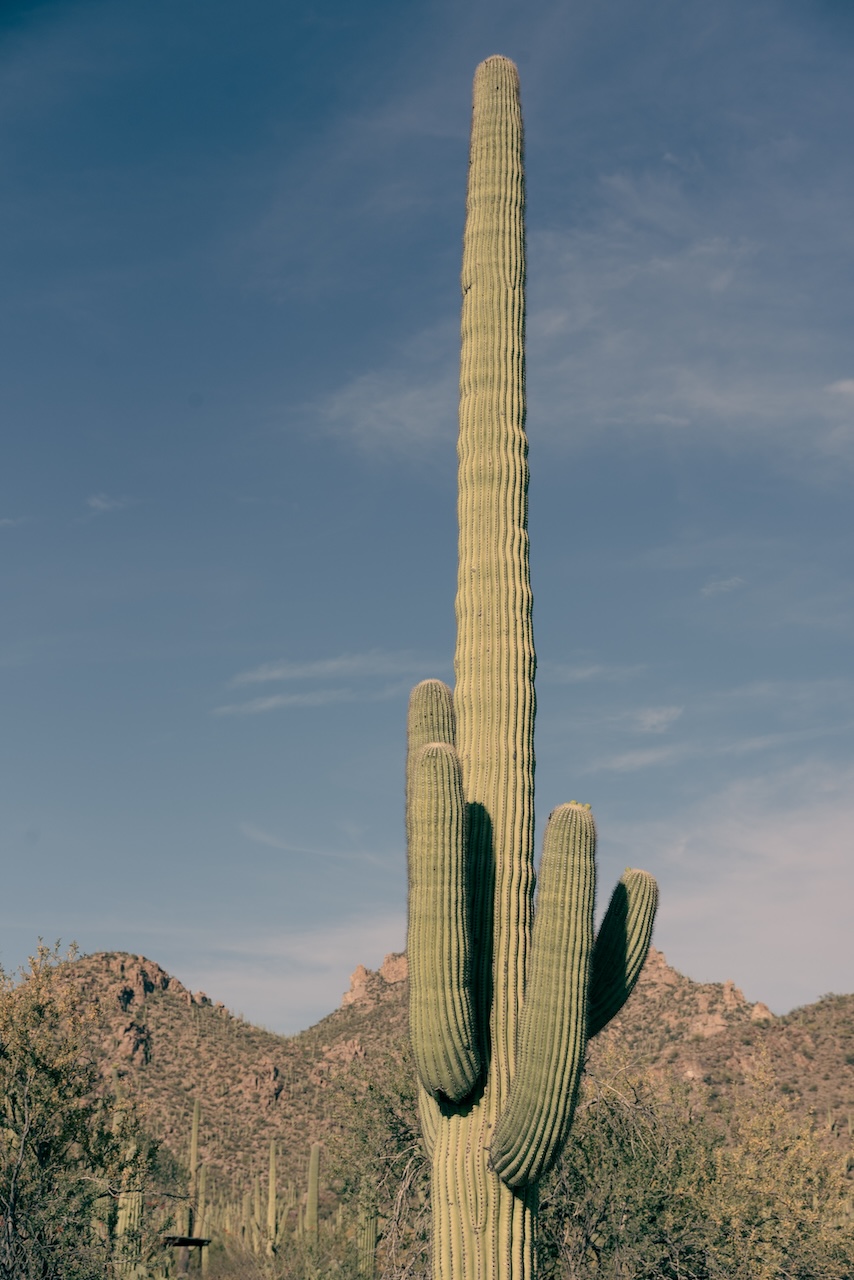
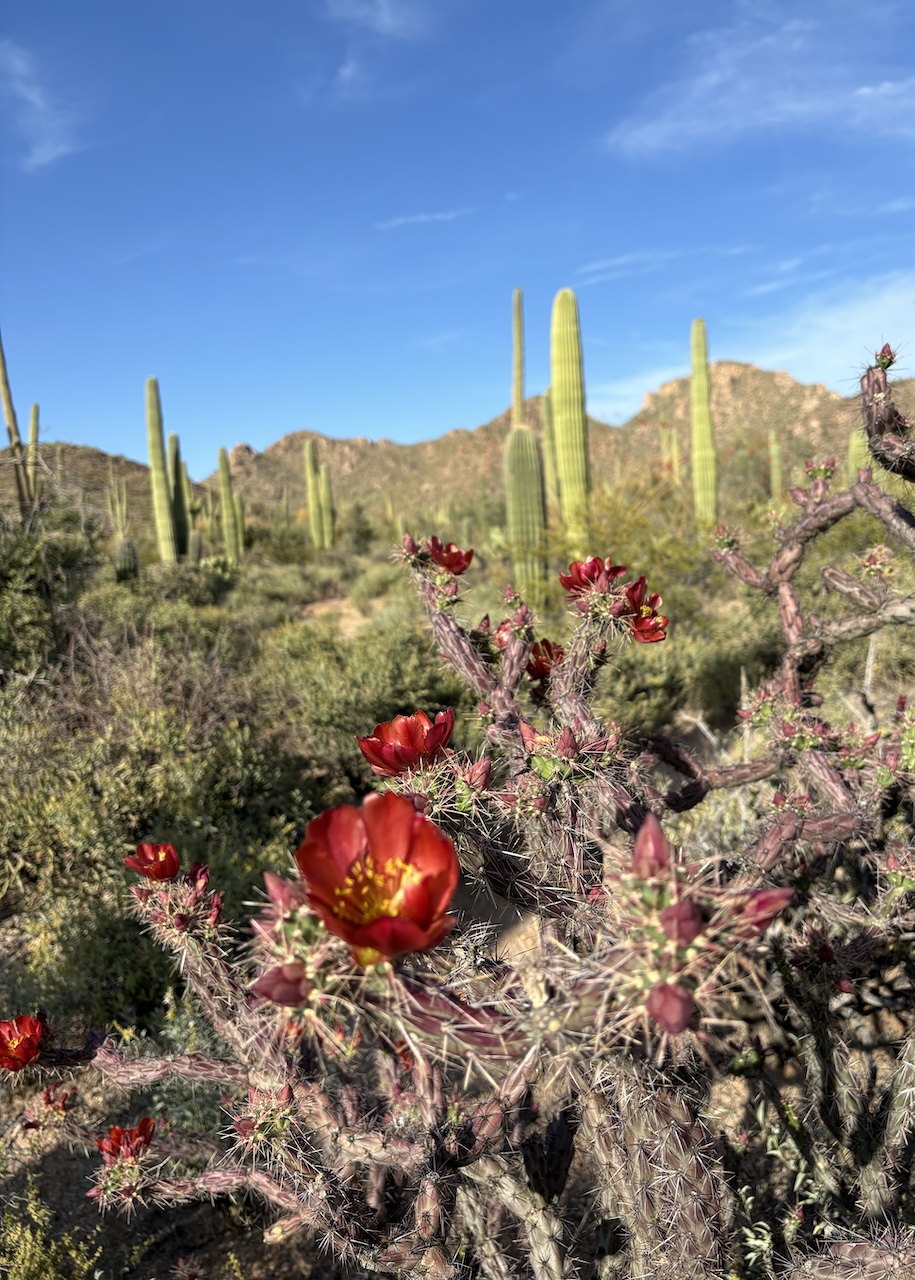
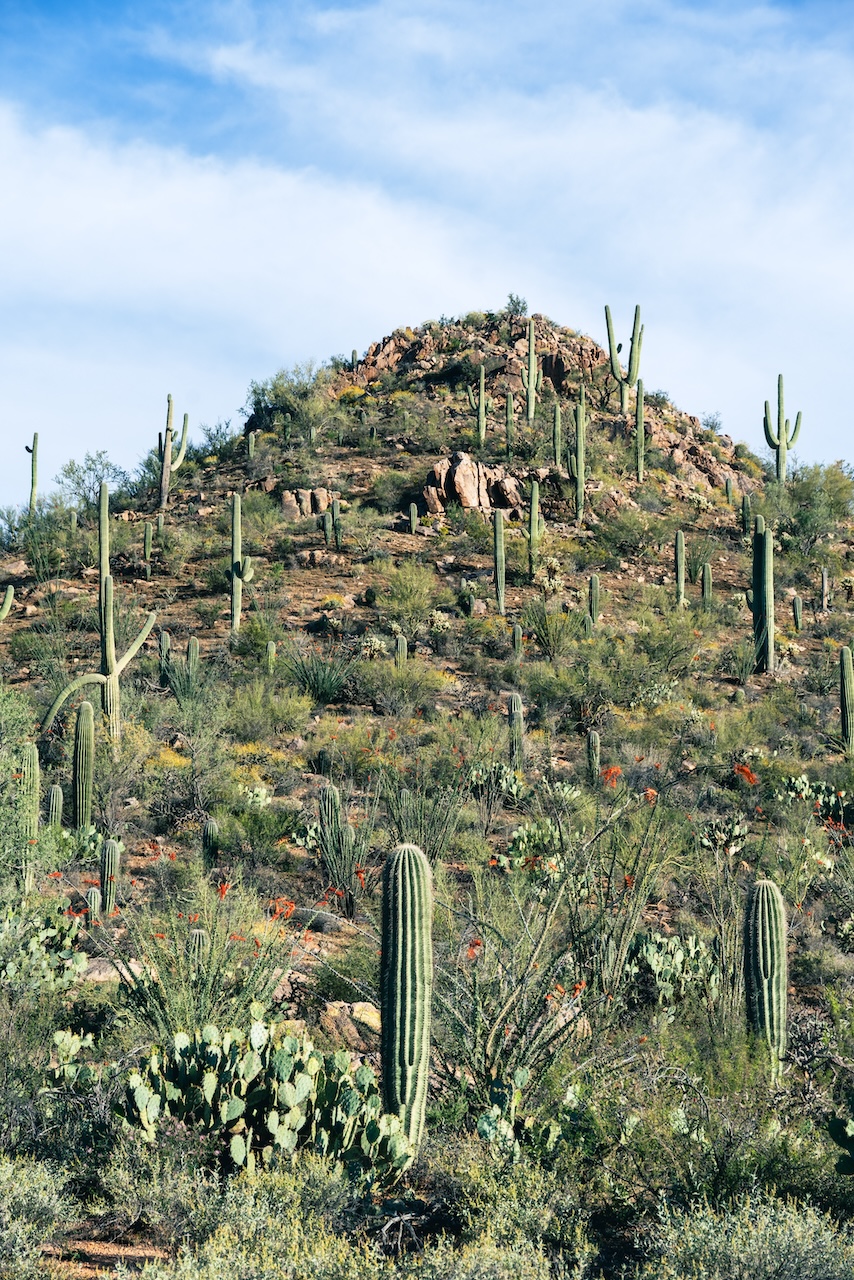
Aim to visit the park’s west side, known as the Tucson Mountain District, where you’ll find an abundance of trails, some petroglyphs, scenic drives and the cactus garden trail. The park’s east side, known as the Rincon Mountain District is a bit smaller but still offers an 8-mile scenic drive with viewpoints and hiking trails for more exploration.
Catch a classic Sonoran sunset from Gates Pass. Technically in the Tucson Mountain Park, the vantage point is located at a parking lot just a few miles southeast of the Tucson Mountain District of the park. You’ll find a crowd of locals parked with their cameras and blankets waiting to catch the show.
Stay past sunset and gaze at the night sky. Tucson is the headquarters for Dark Sky International, so it’s no wonder that Saguaro National Park was certified as the newest Urban Night Sky Place in late 2023. Despite being near a large urban area, the park is a great place for stargazing amongst the Saguaros.
Arizona-Sonora Desert Museum
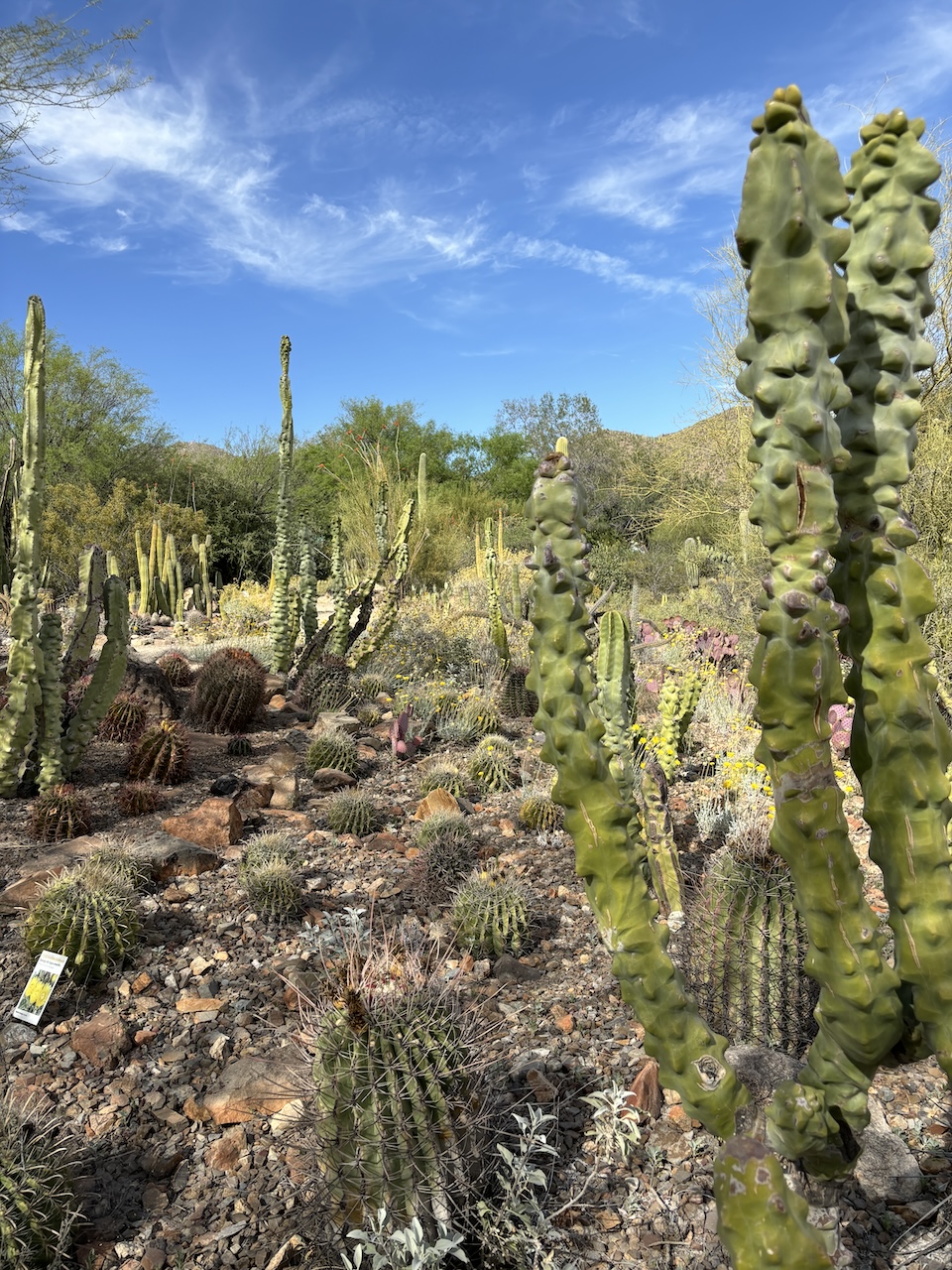
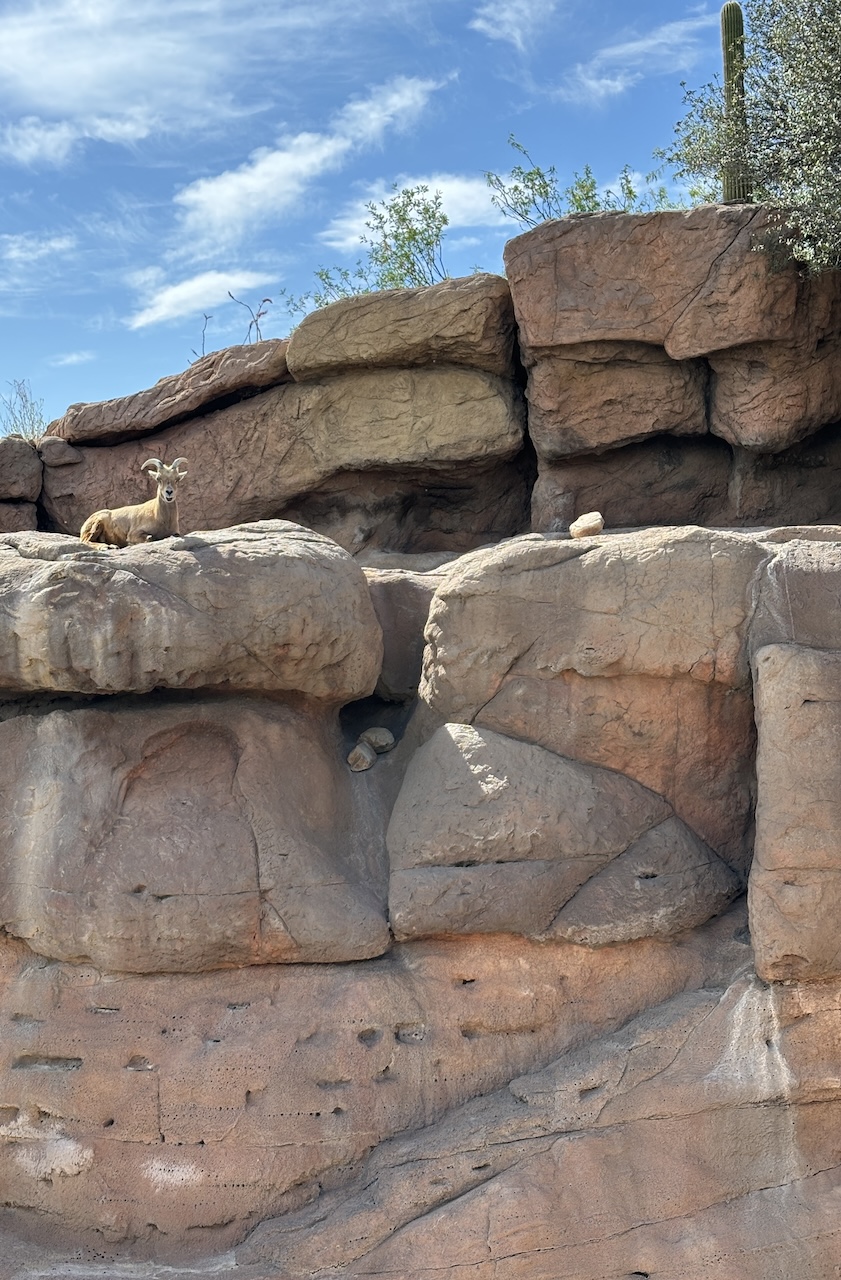
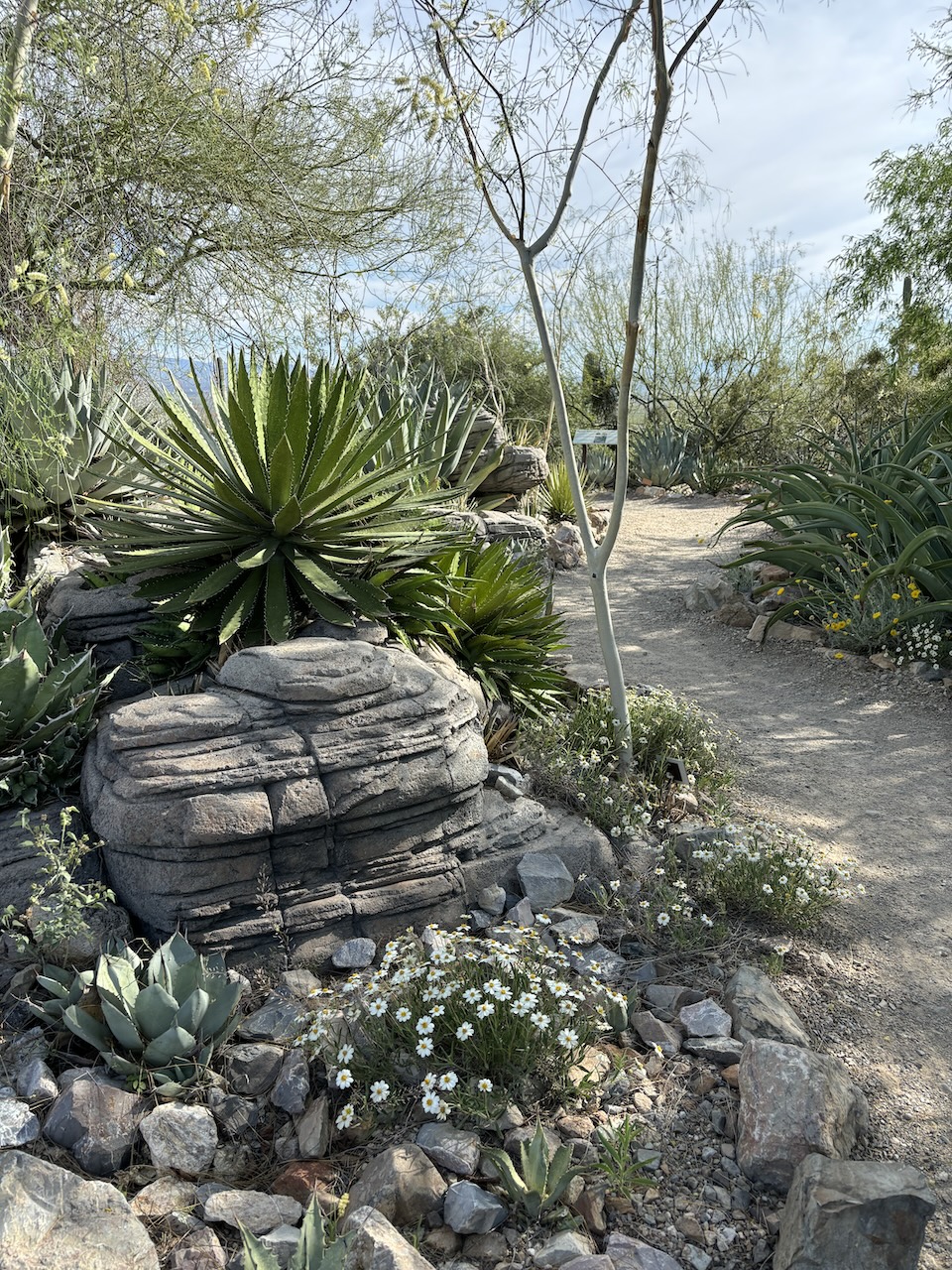
Don’t be fooled by the word “museum” as the Arizona-Sonora Museum is anything but. Located inside the Tucson Mountain Park, a public park created to protect the saguaros and another desert habitat, the Museum spans nearly 100 acres featuring a zoo, an aquarium, thousands of cacti, desert plants and wildlife, botanical gardens and an art gallery.
The museum highlights a vast variety of native species and plants that make up the Sonoran Desert. Get an up-close look at some of the more intricate and delicate plant life that lives in the Sonoran Desert. Located next to the Saguaro National Park’s west side, it’s the perfect stop before visiting the park to understand and appreciate this unique ecosystem.
For more about what to do and why now is the best time to visit Tucson, Arizona, visit their website at VisitTucson.
*all images taken by Jessica Hughes






